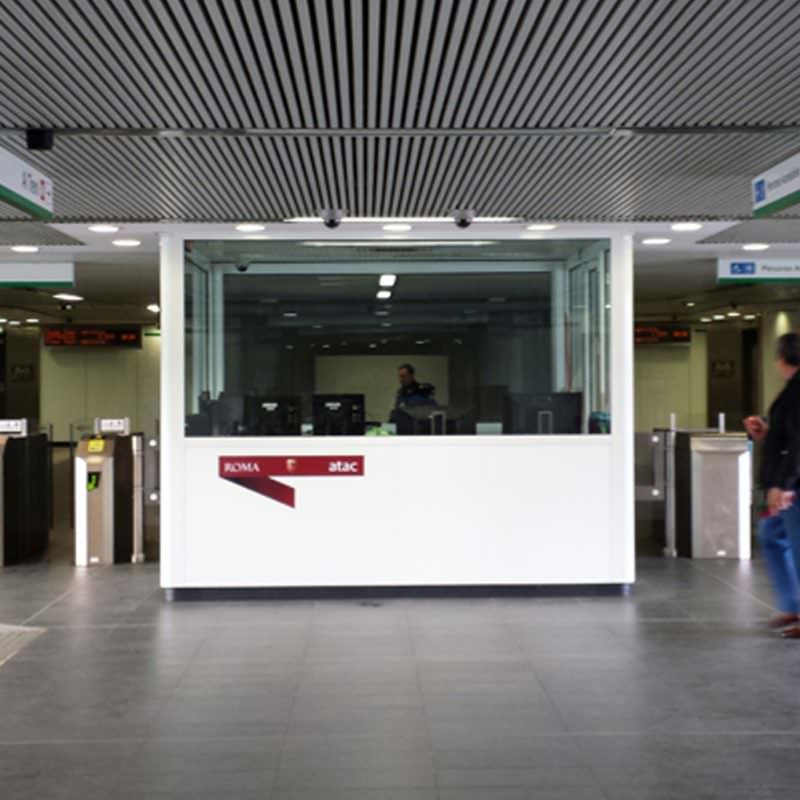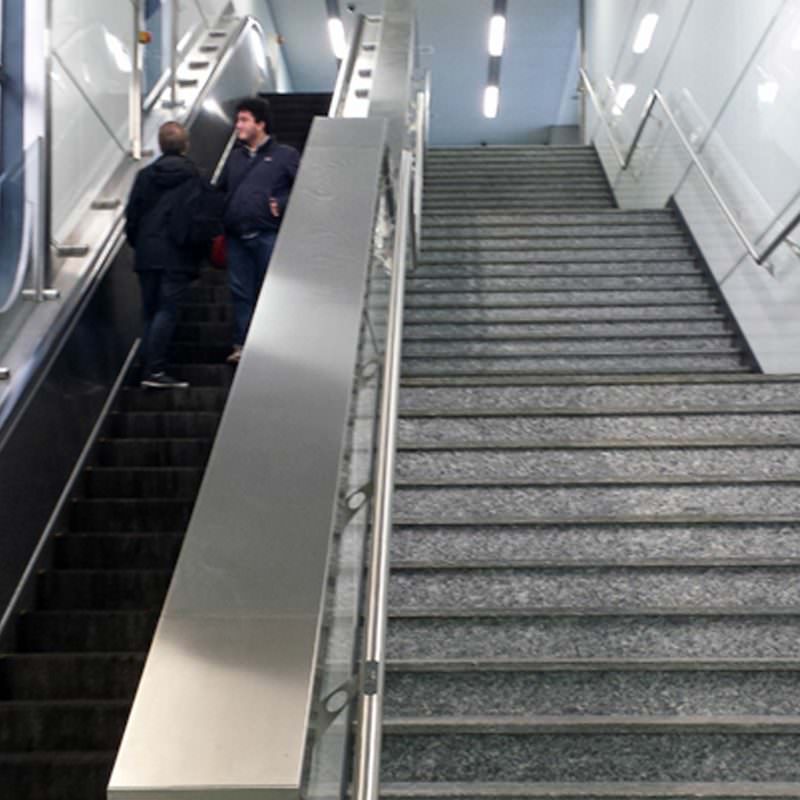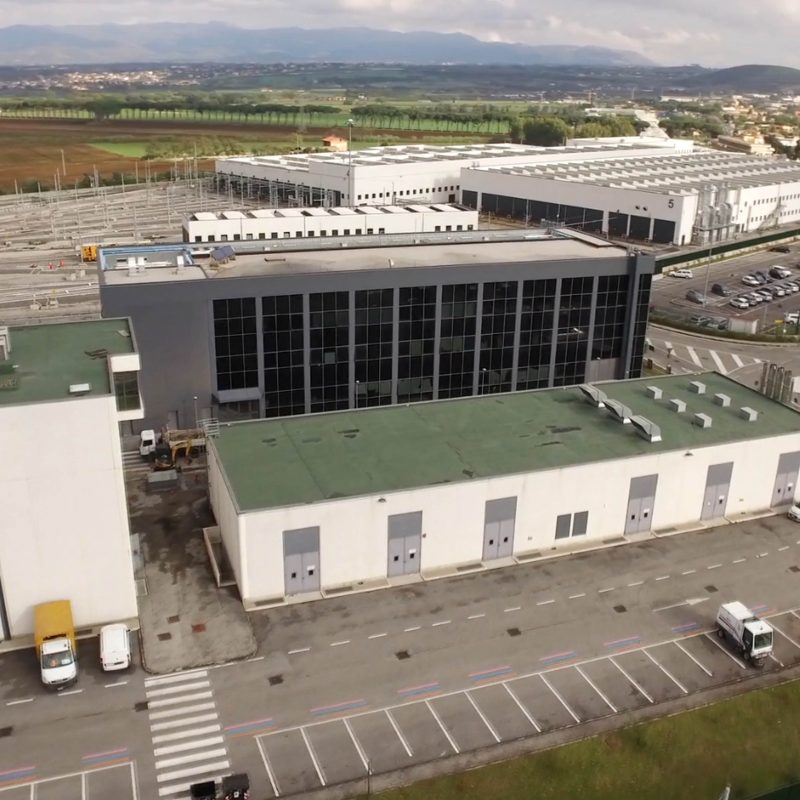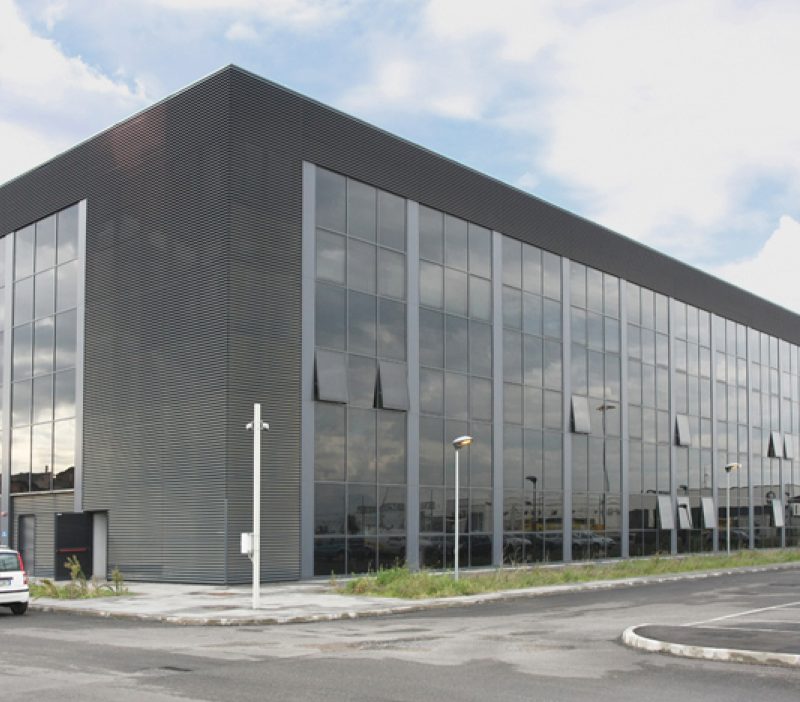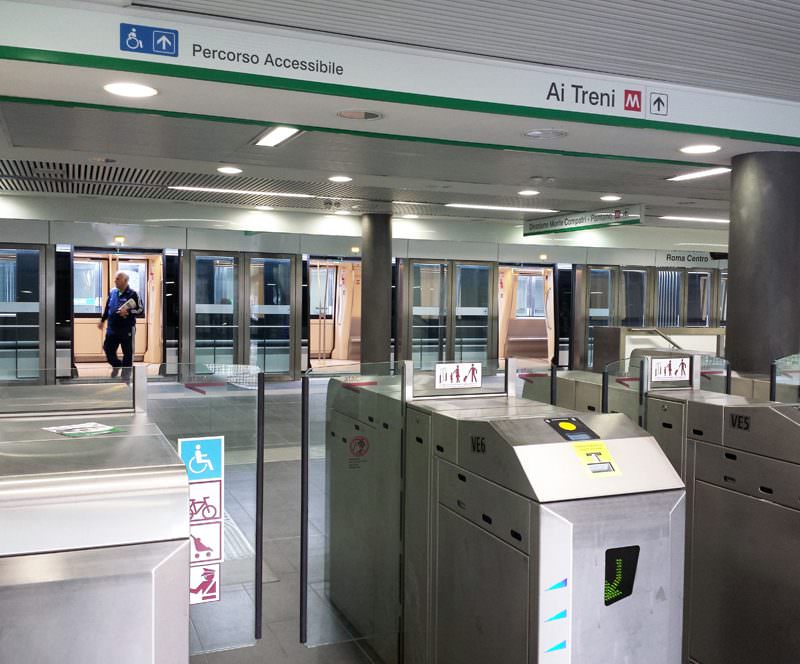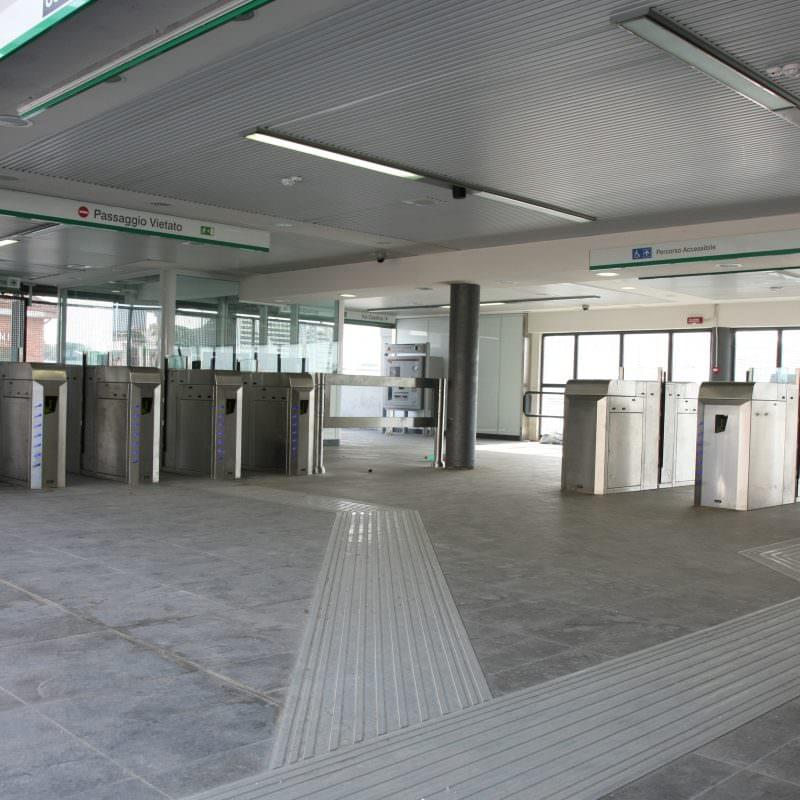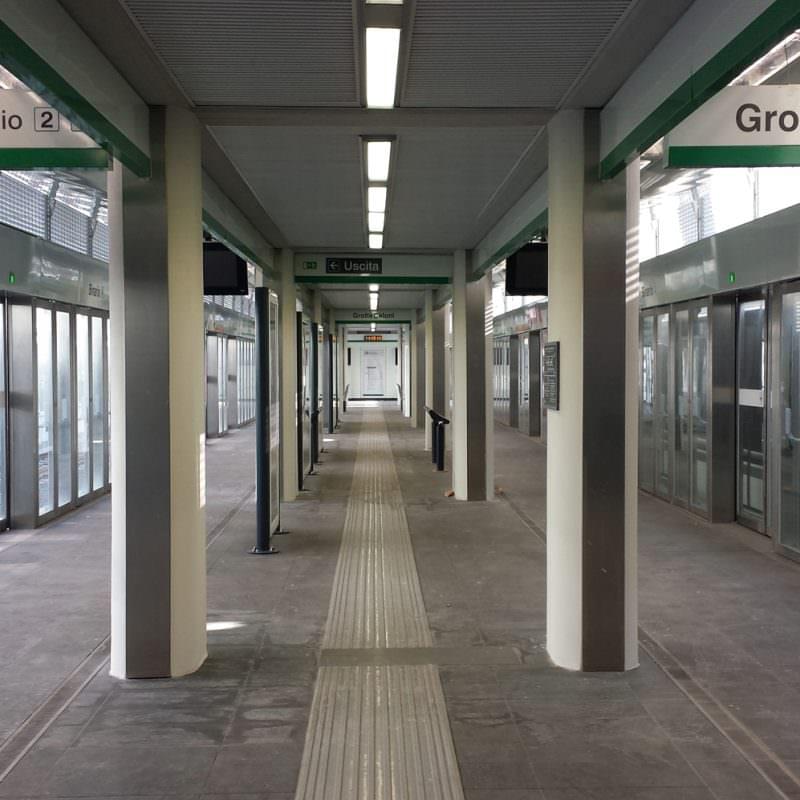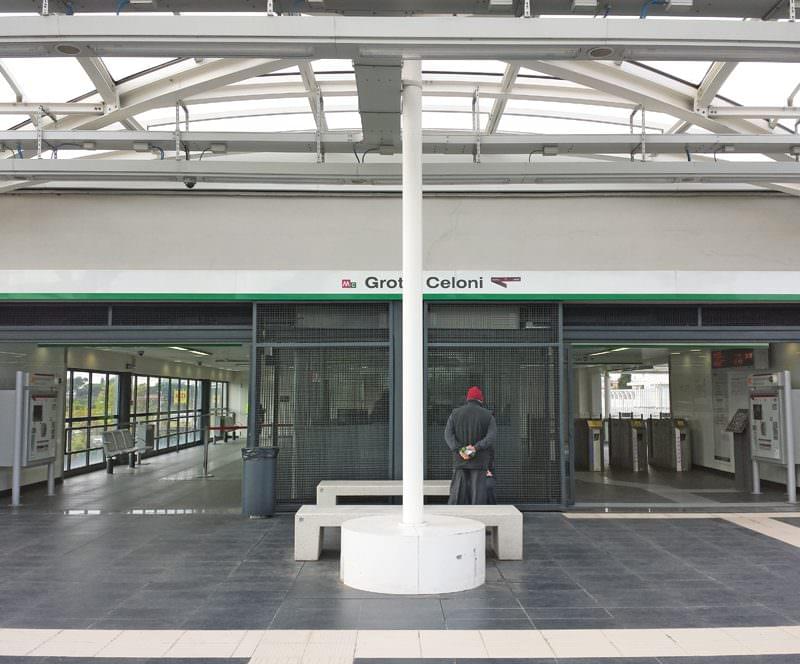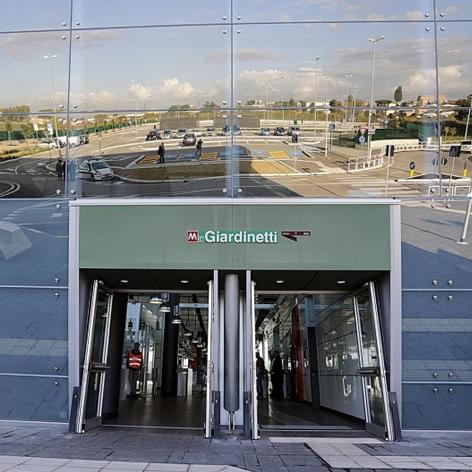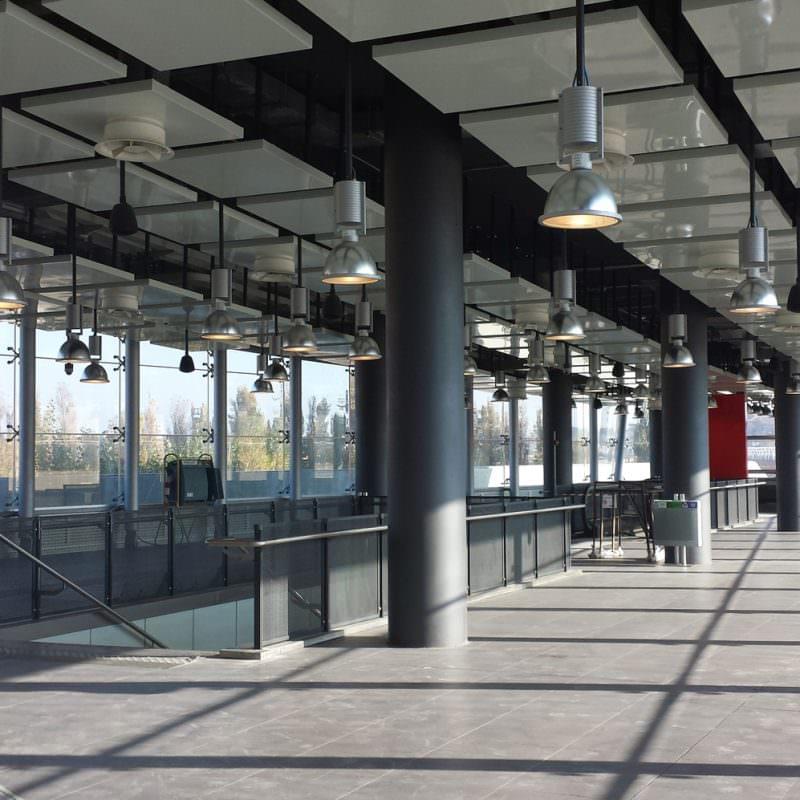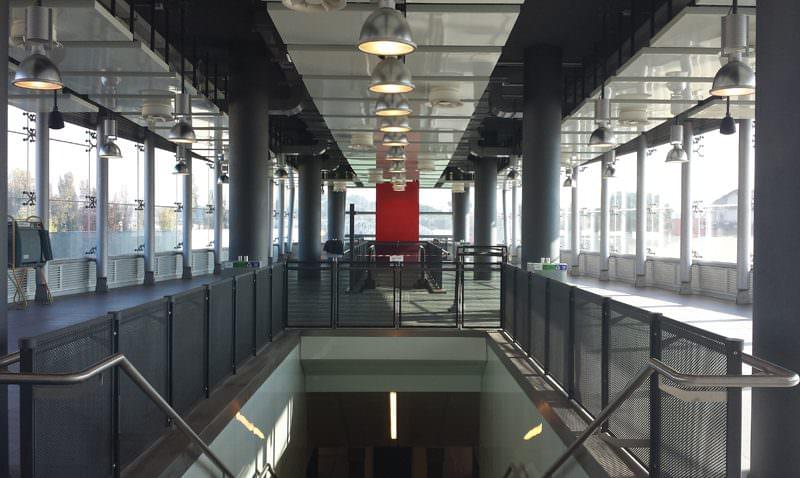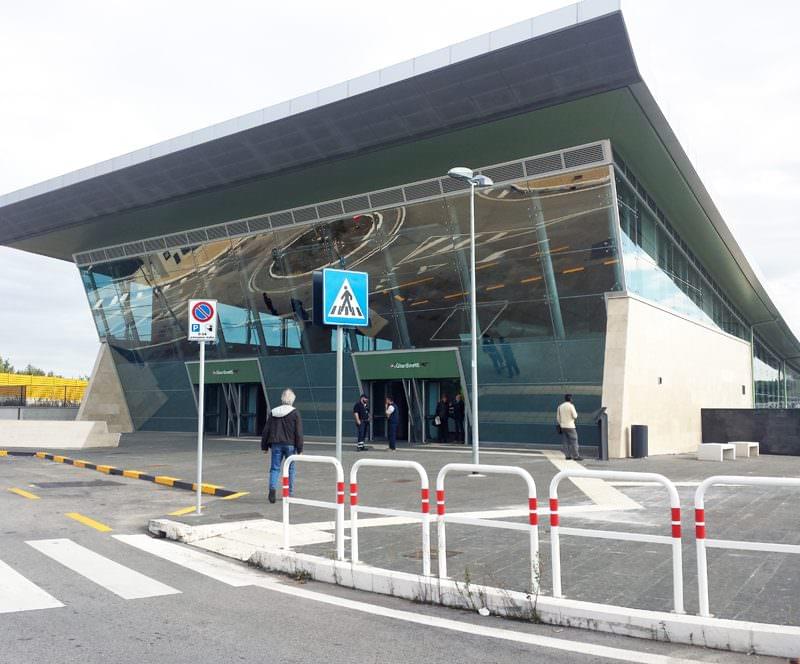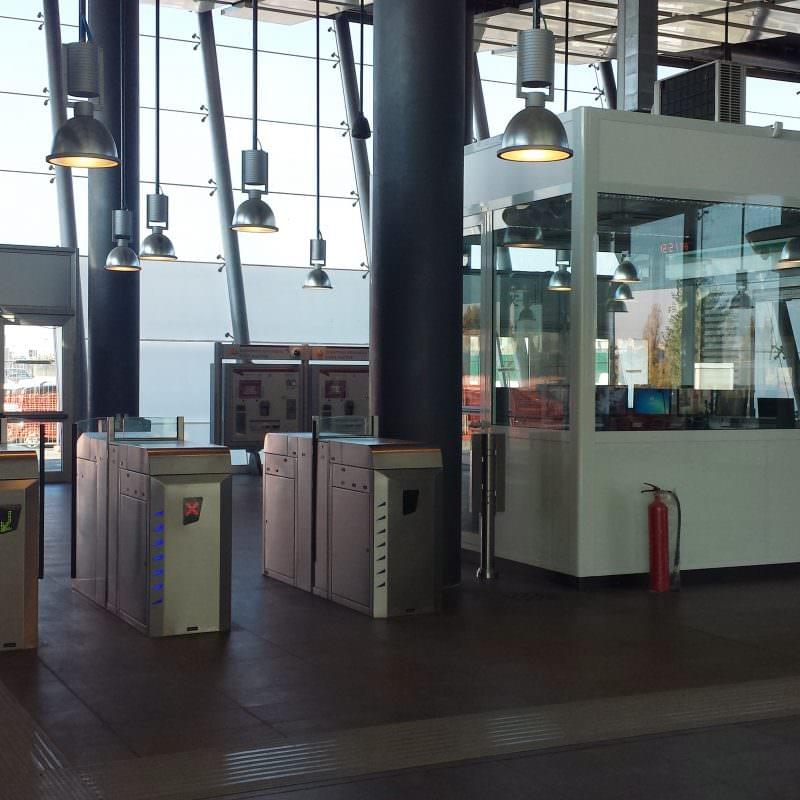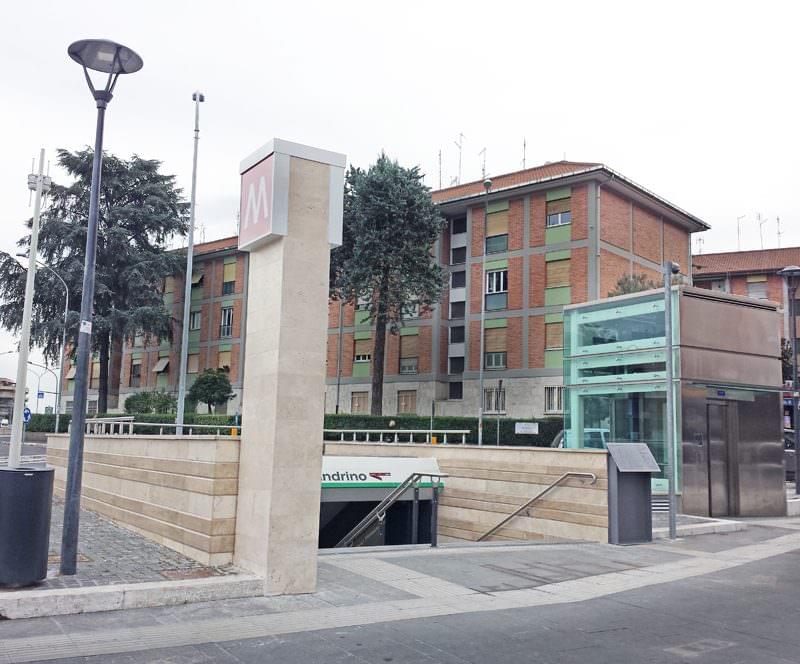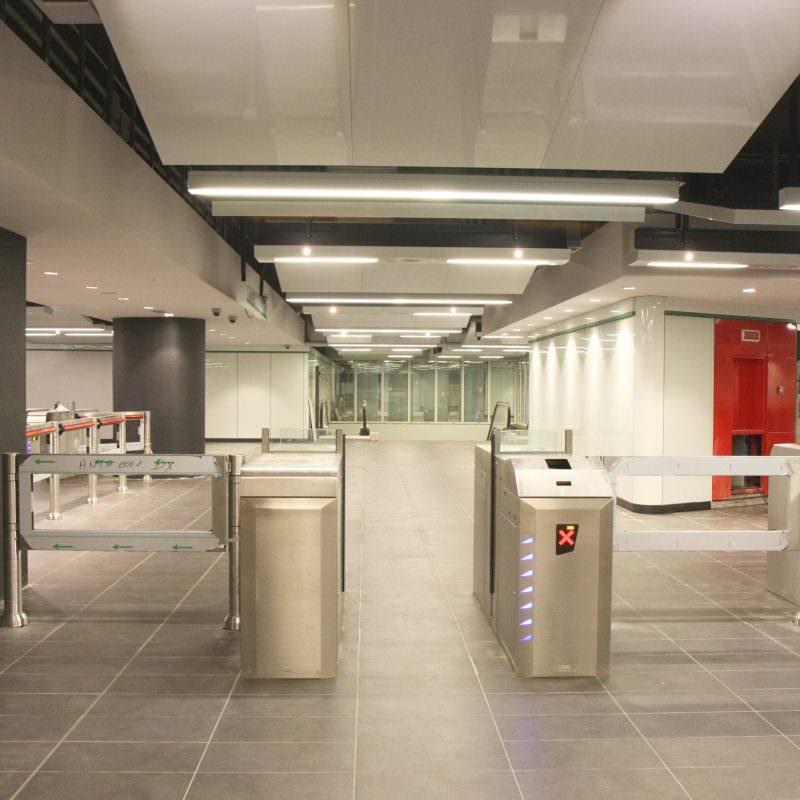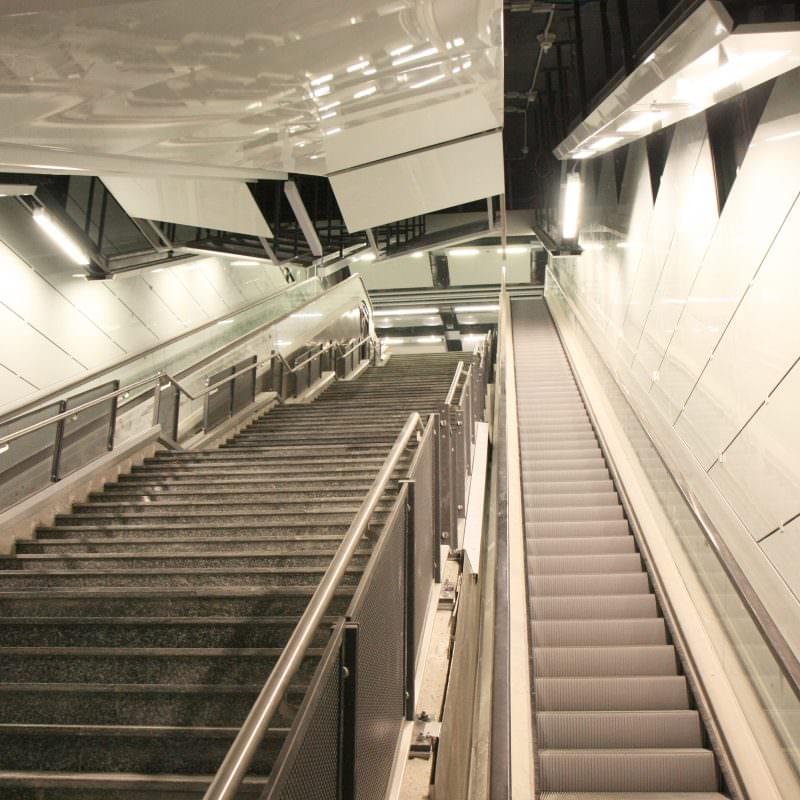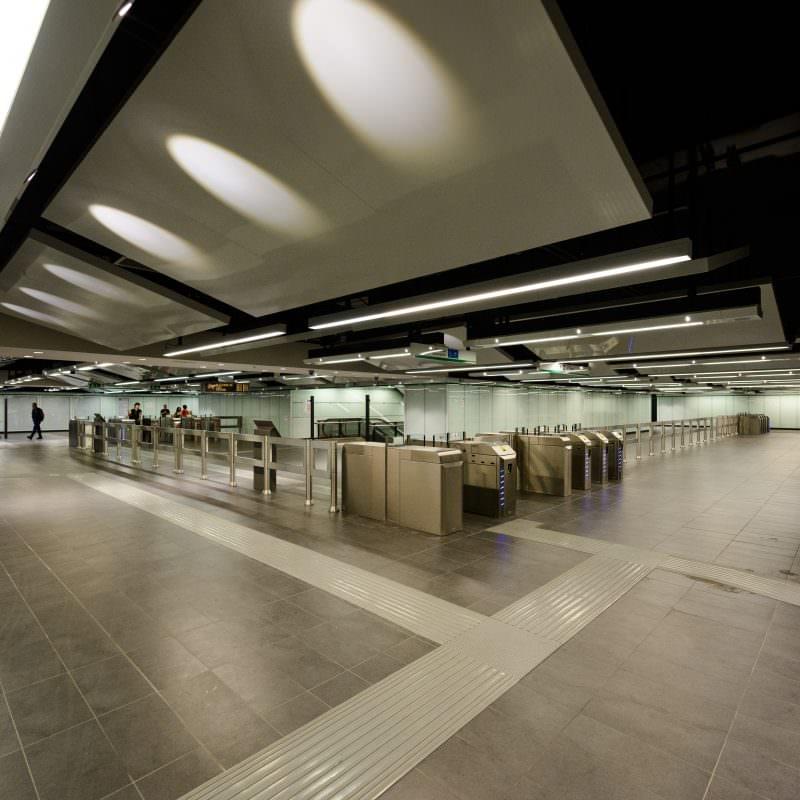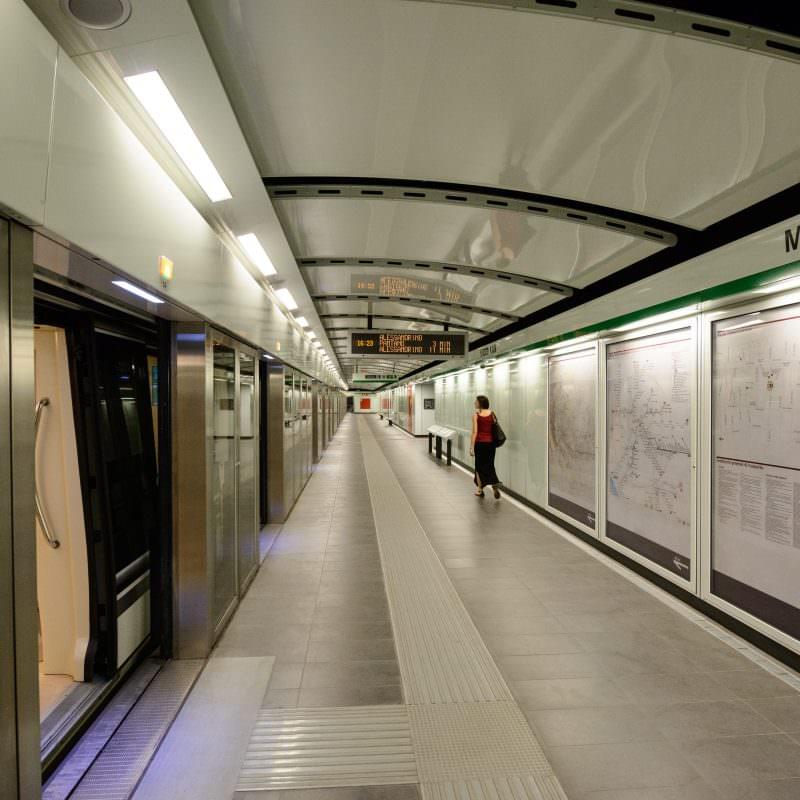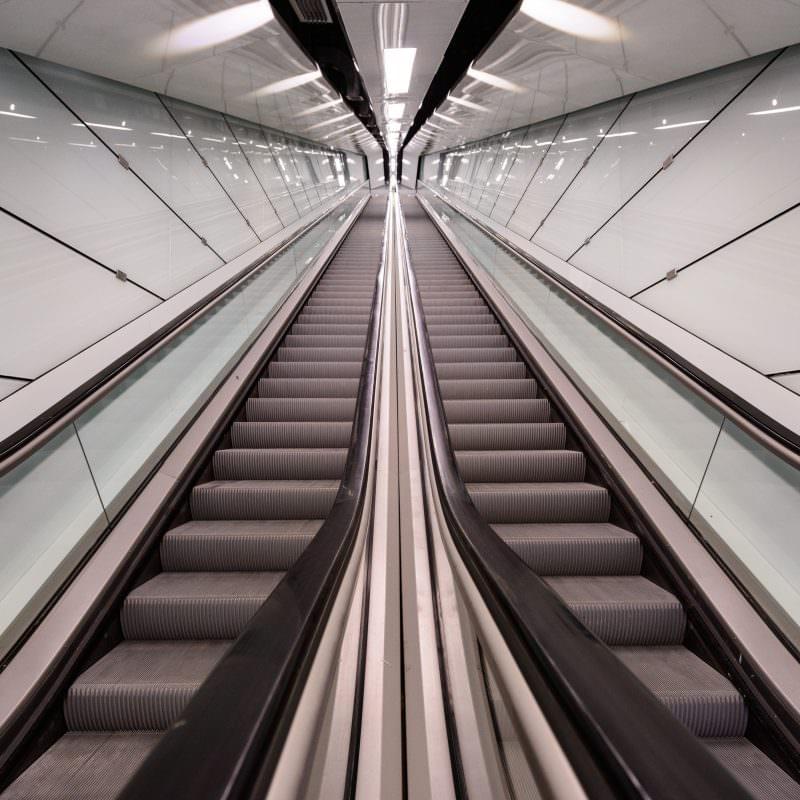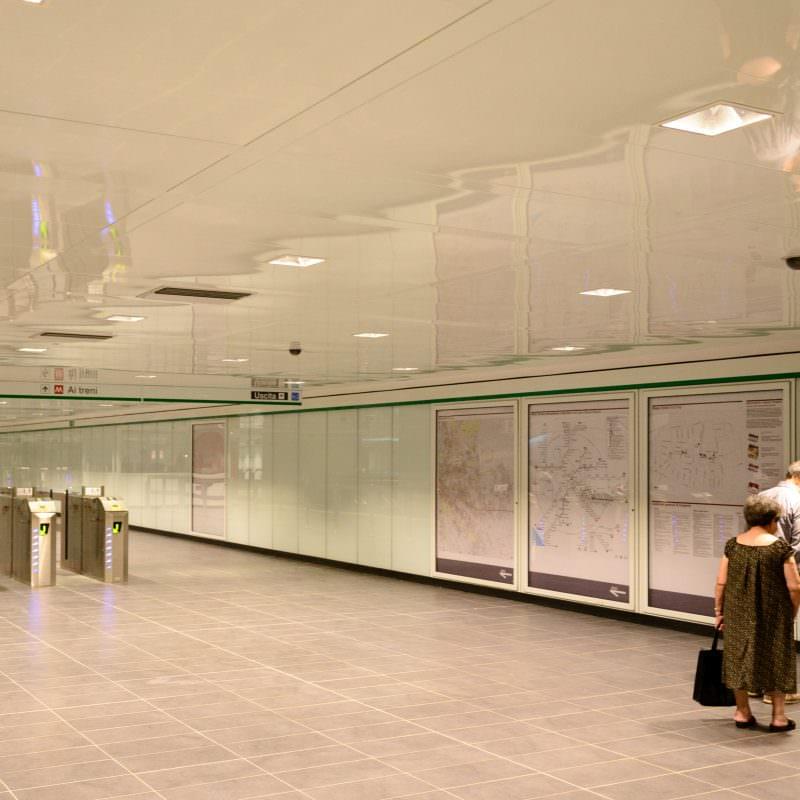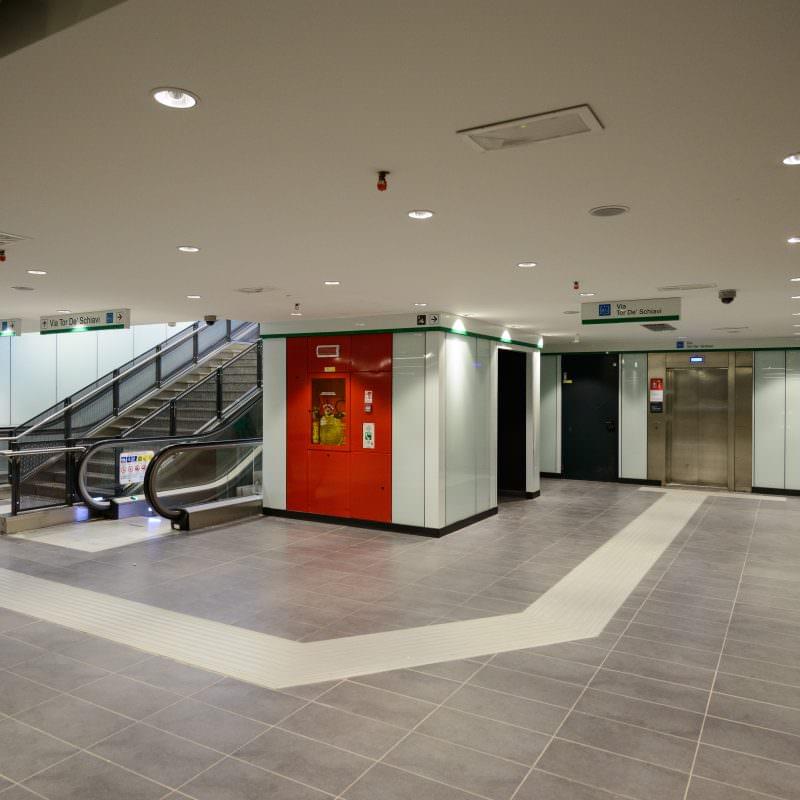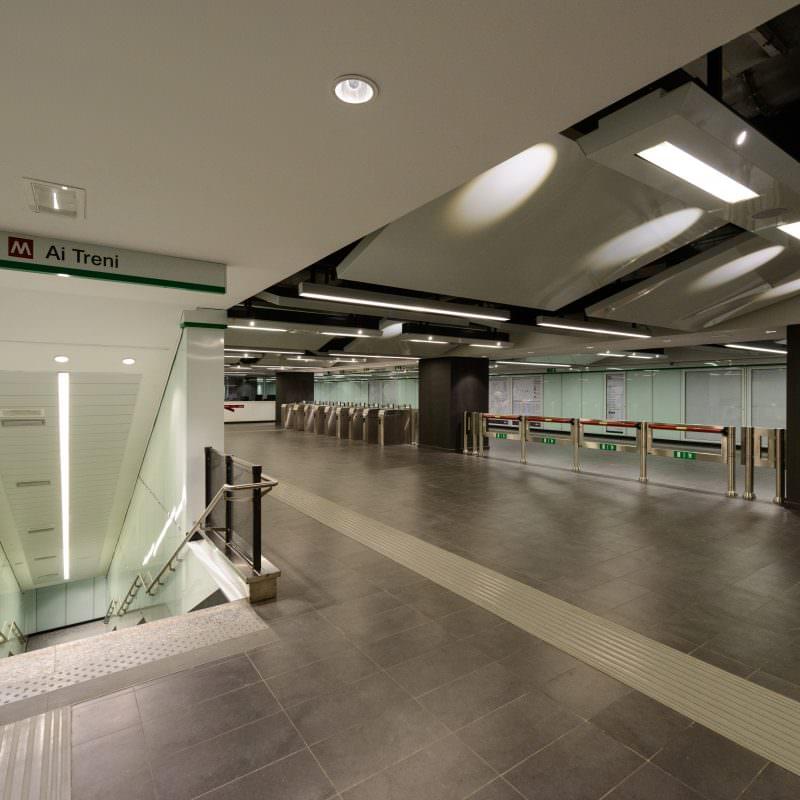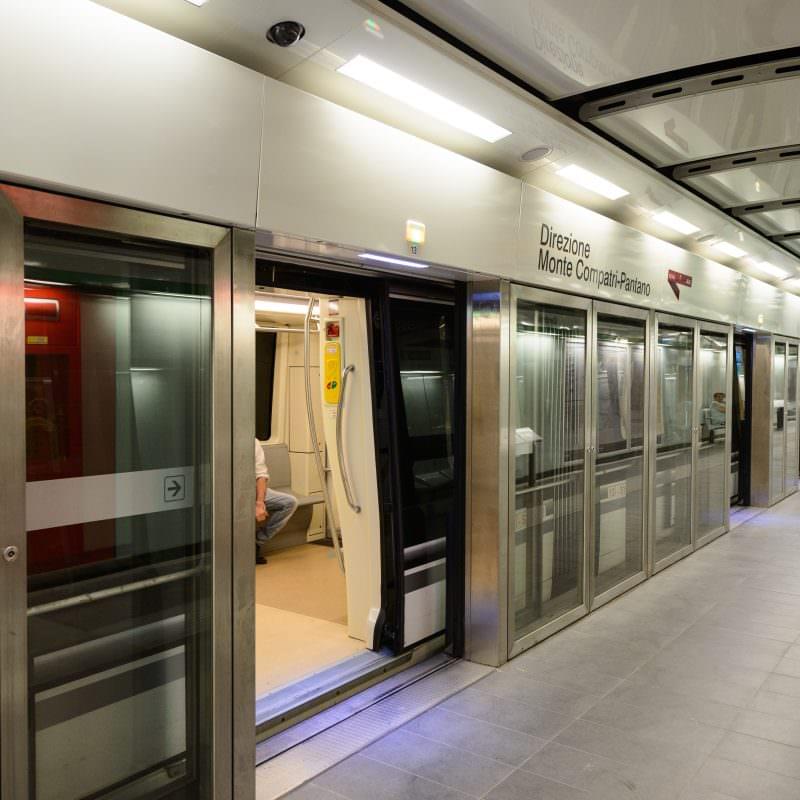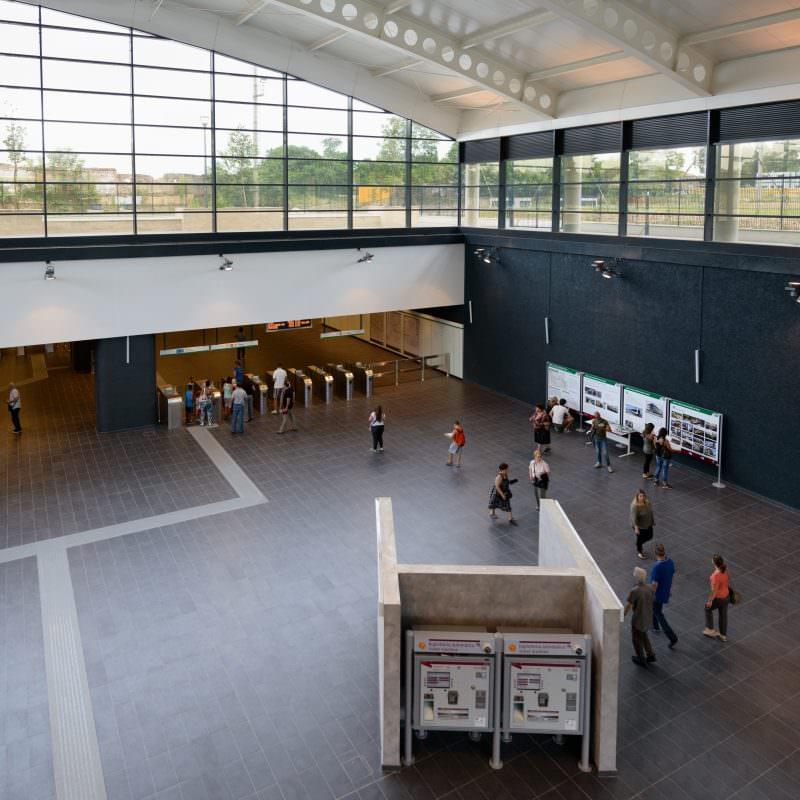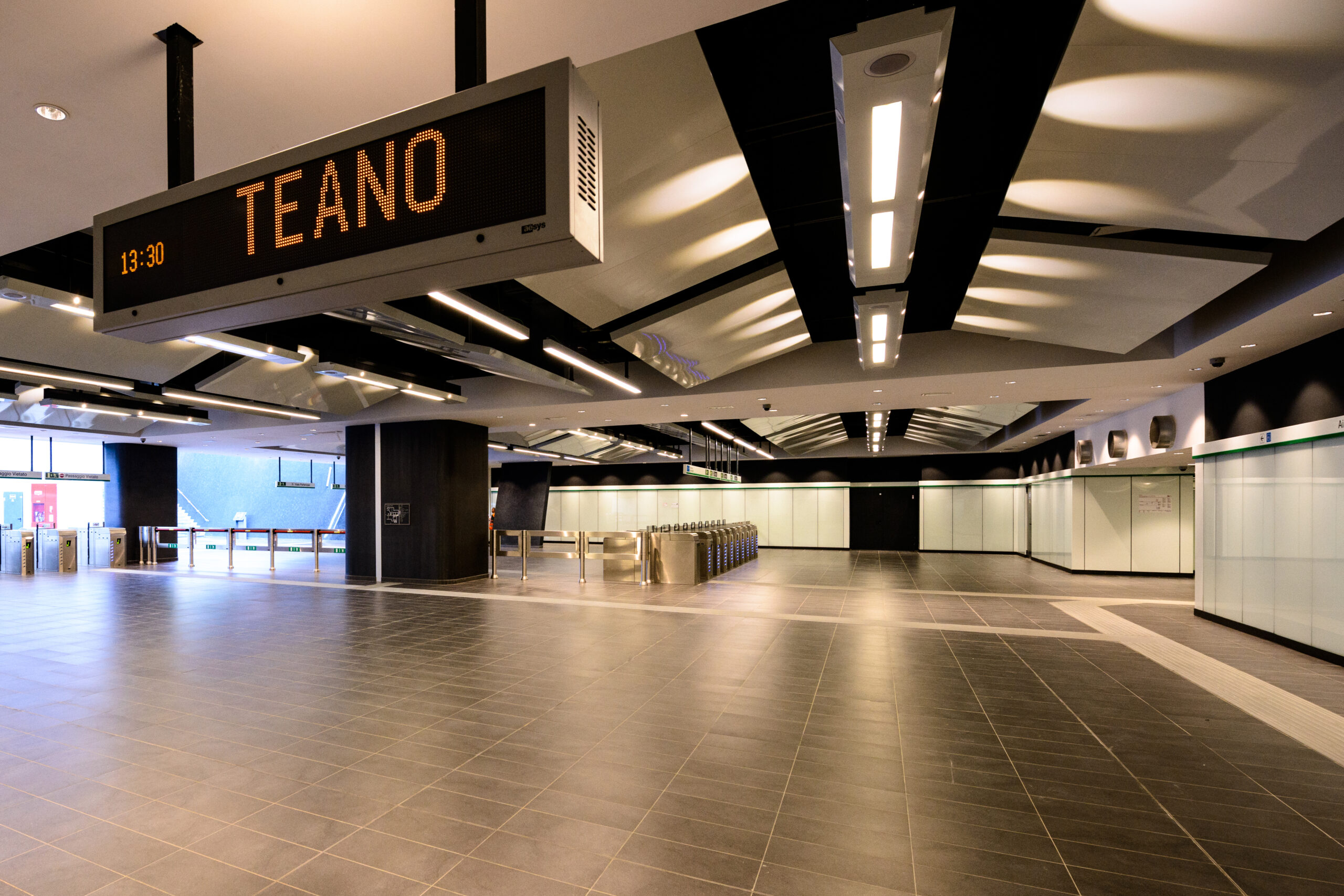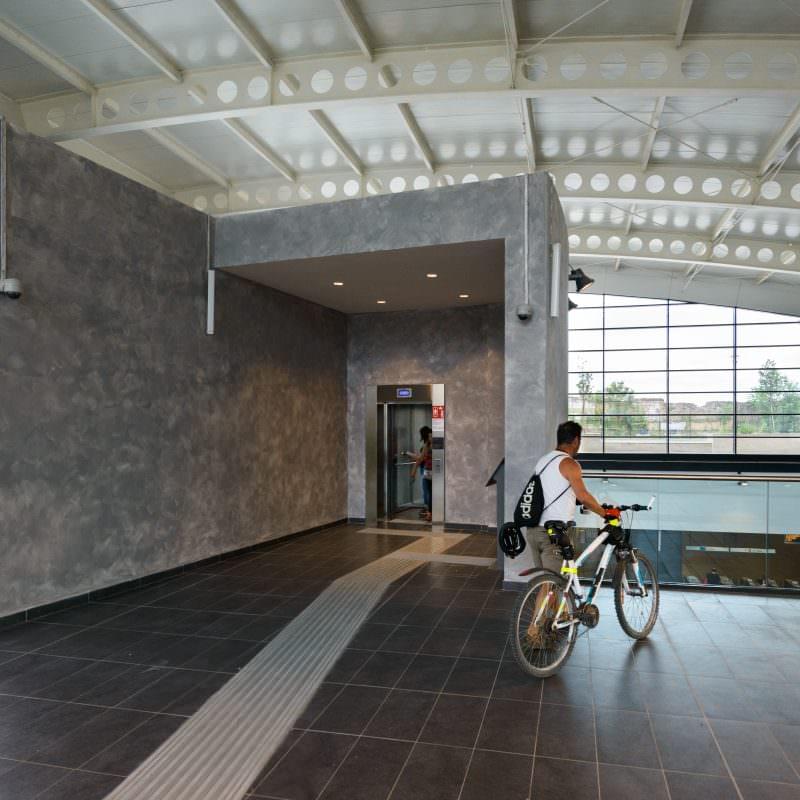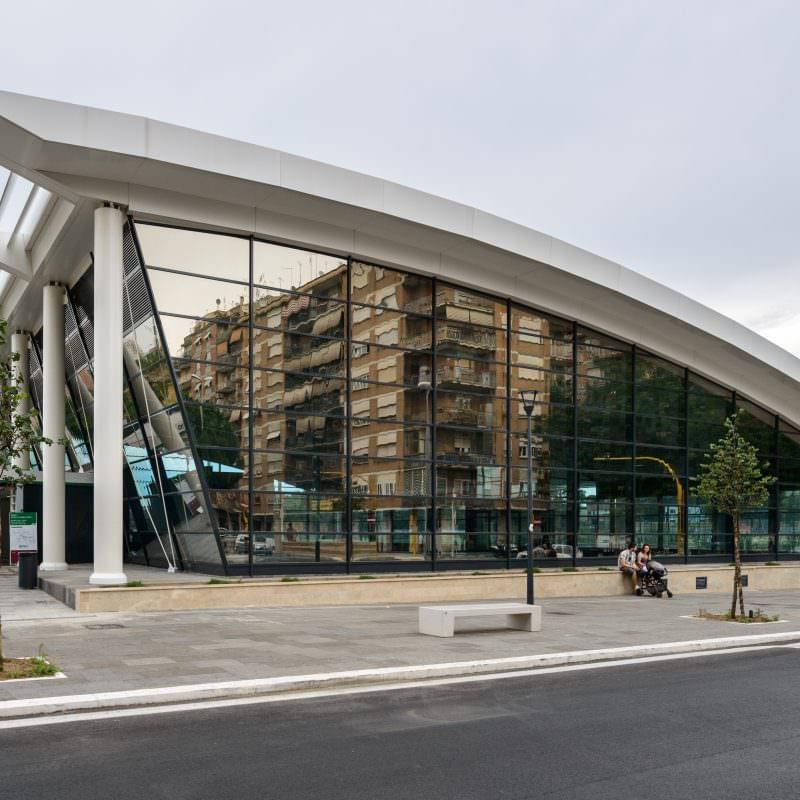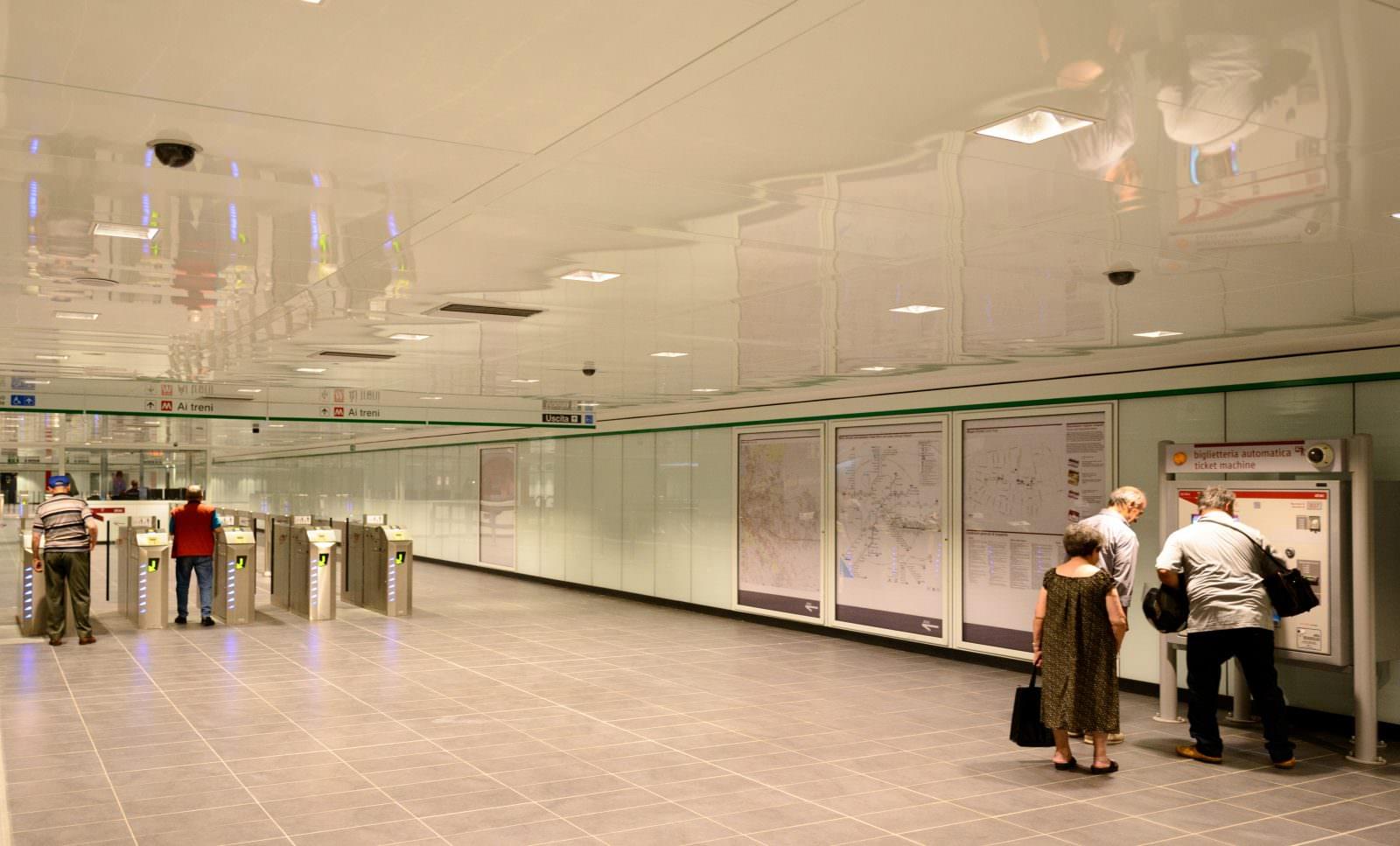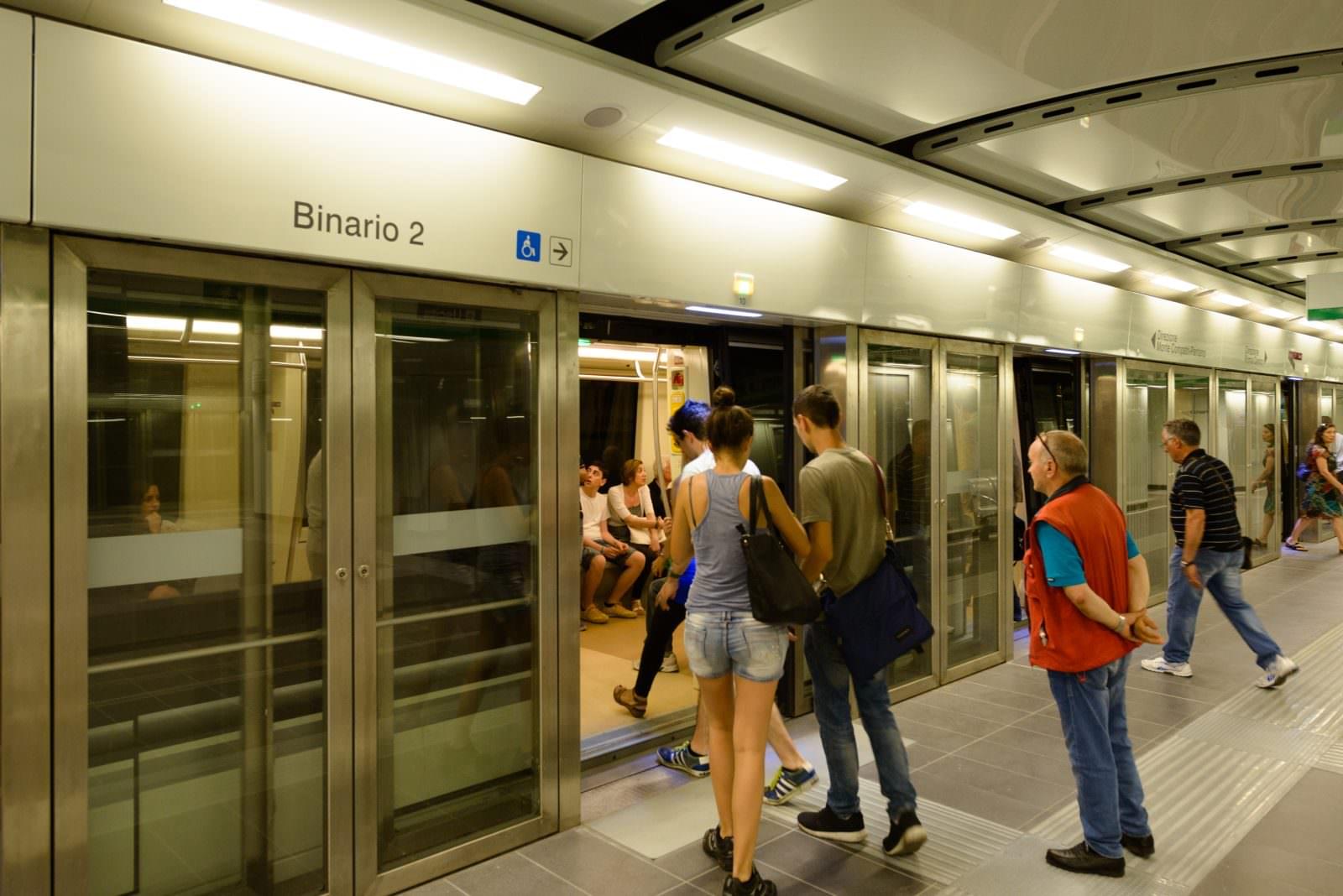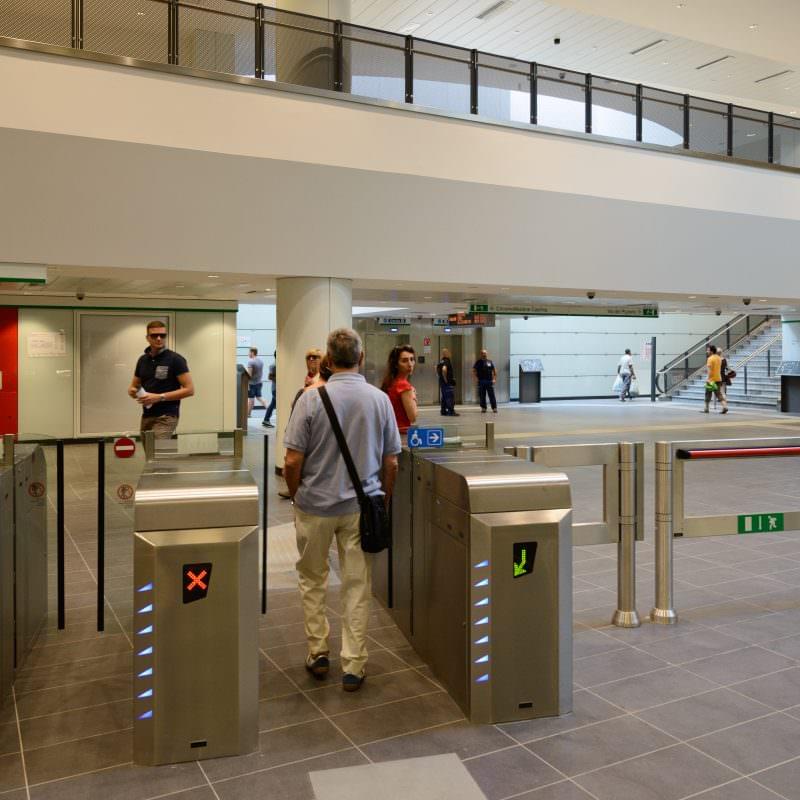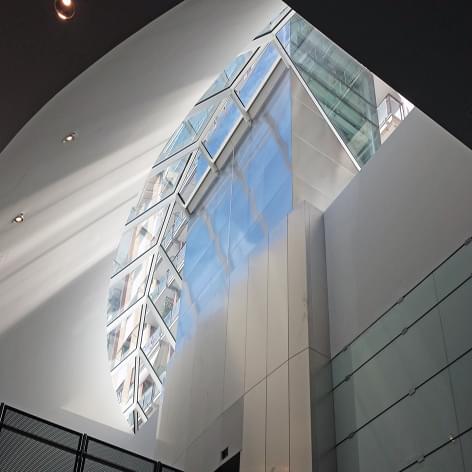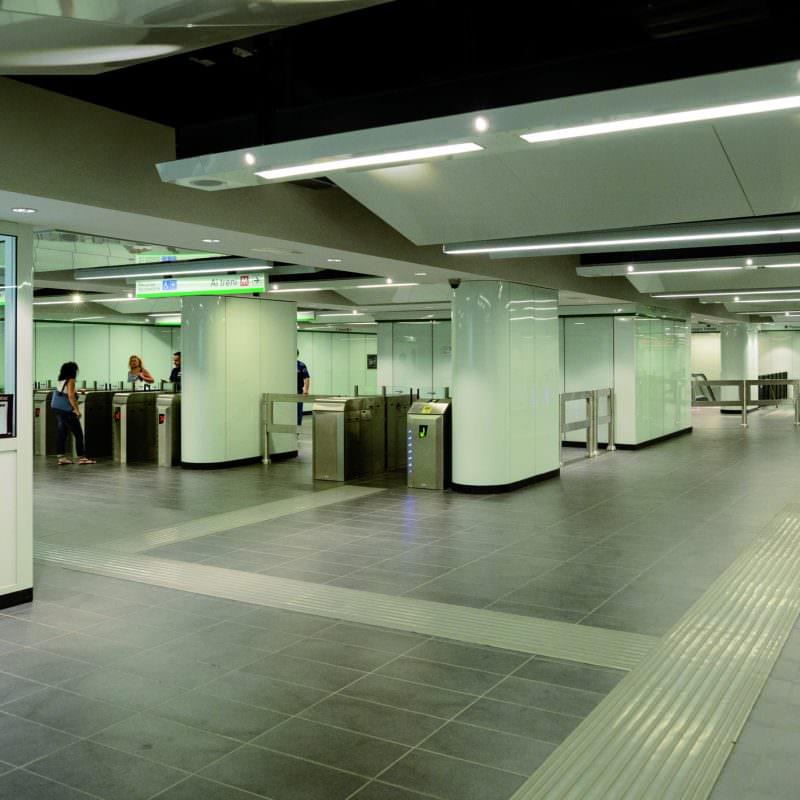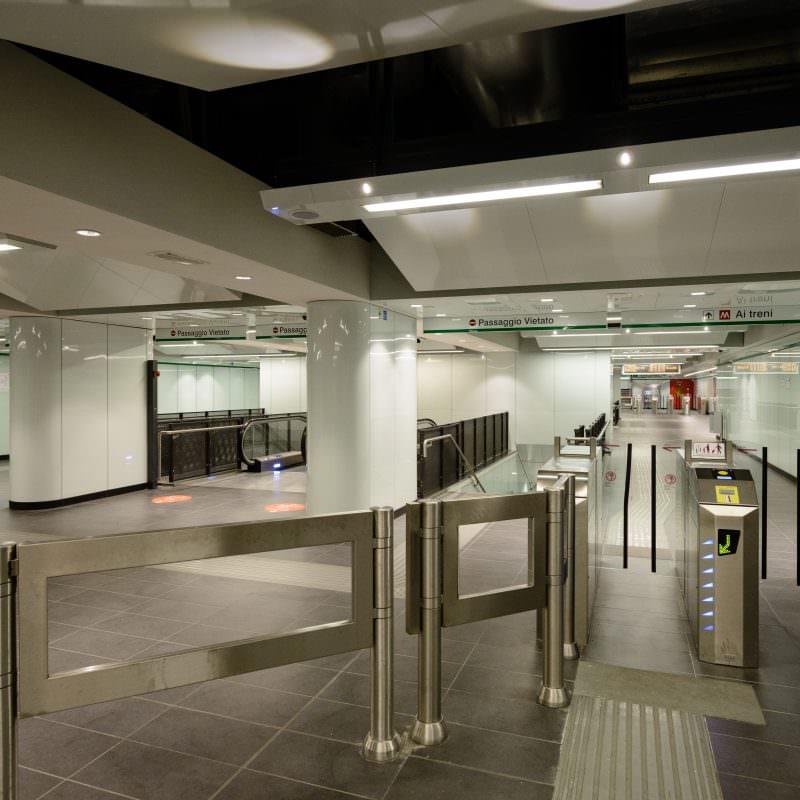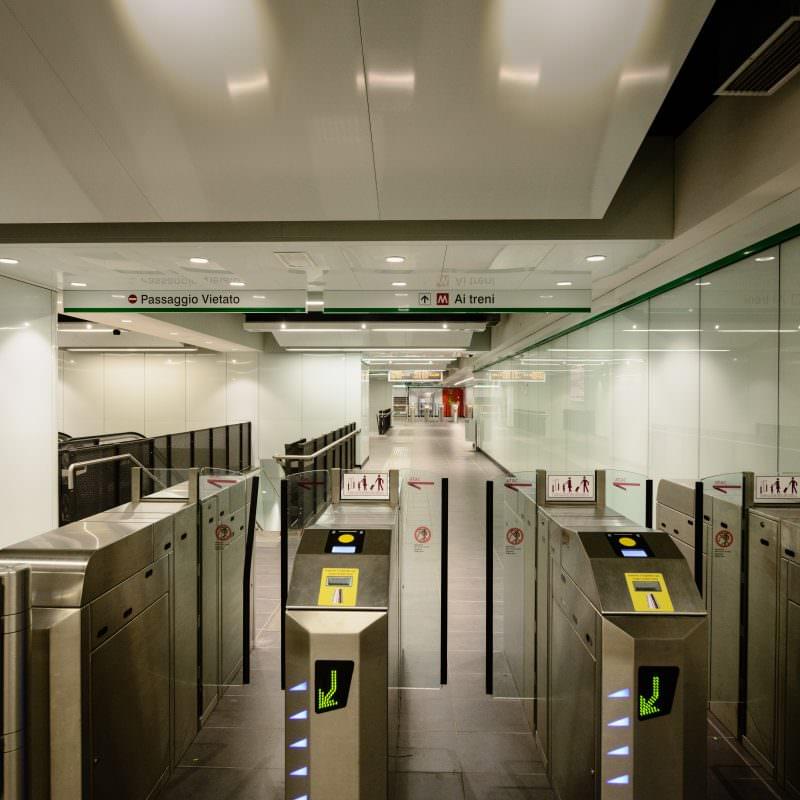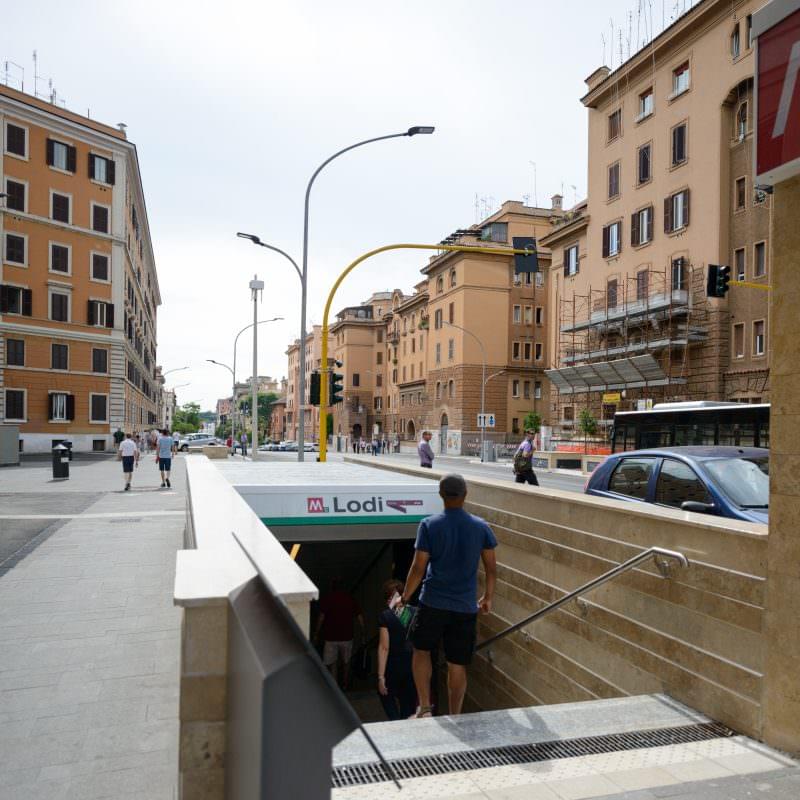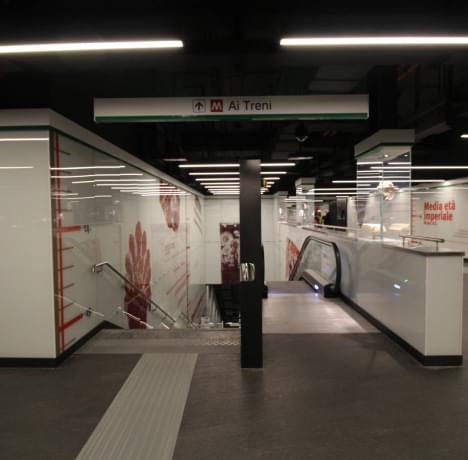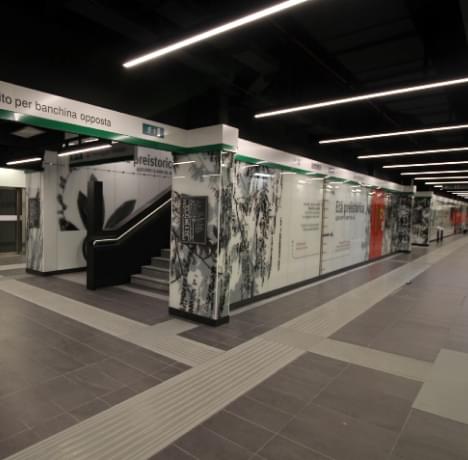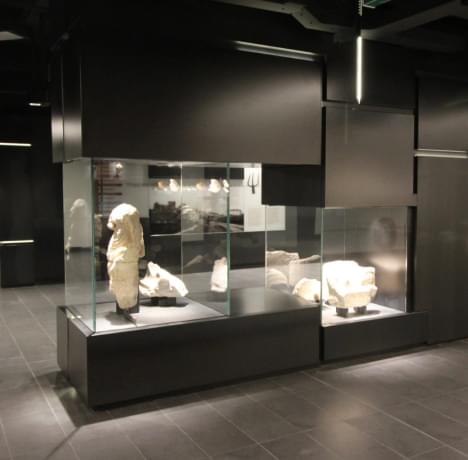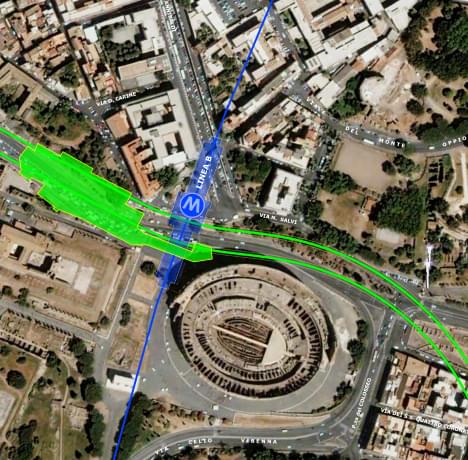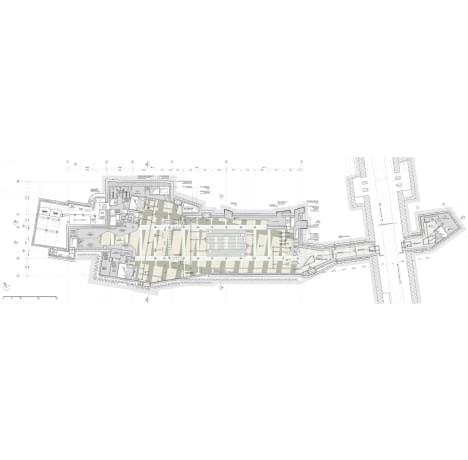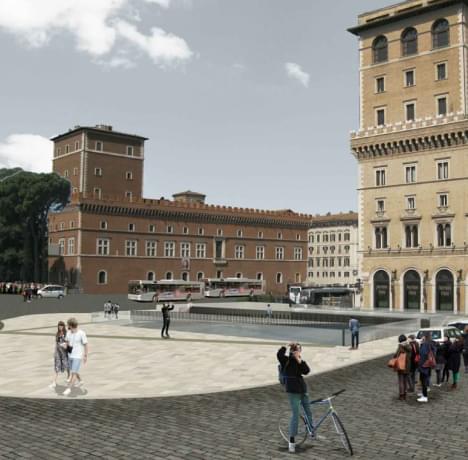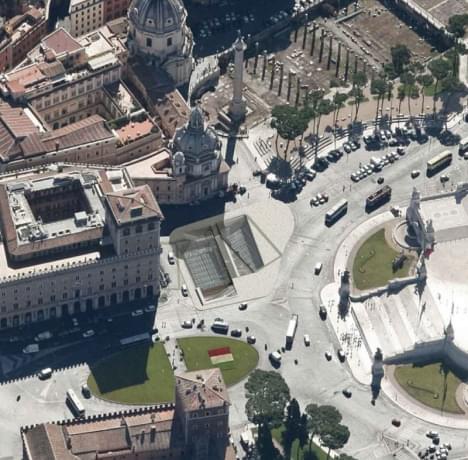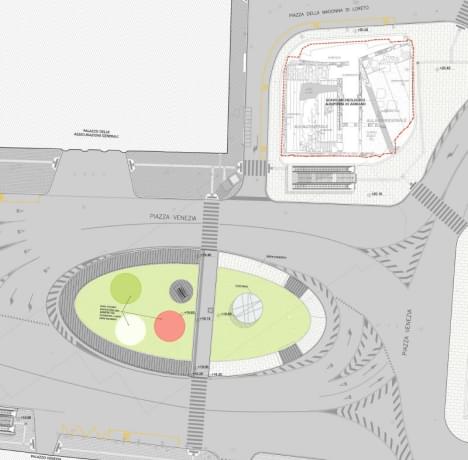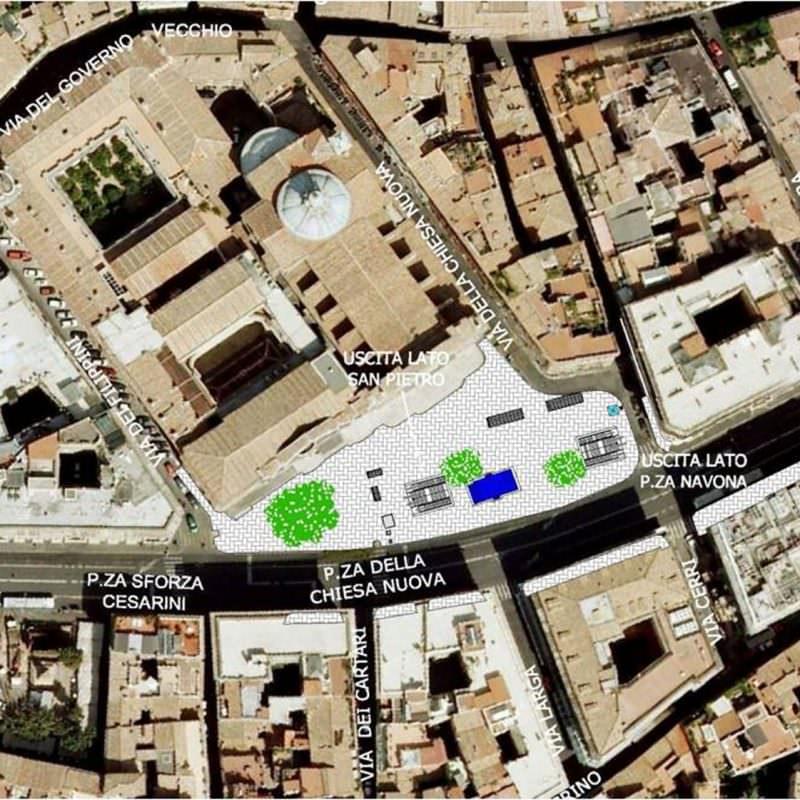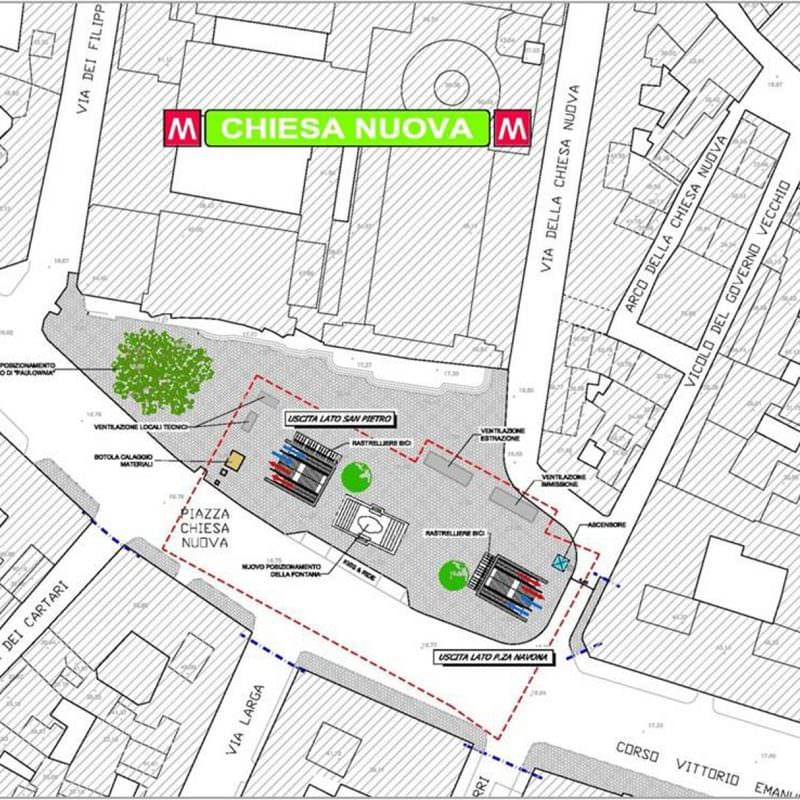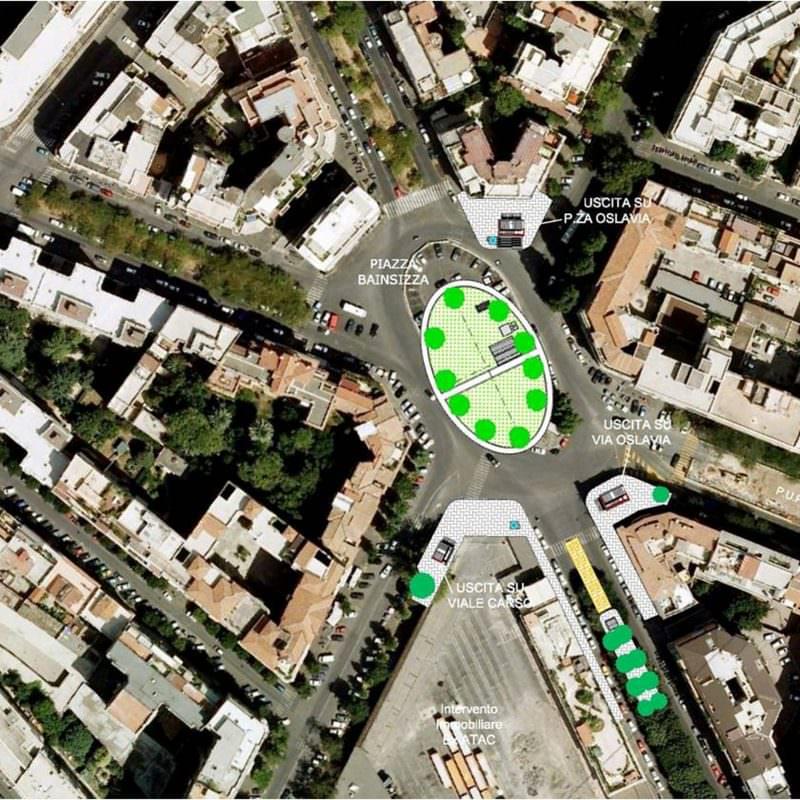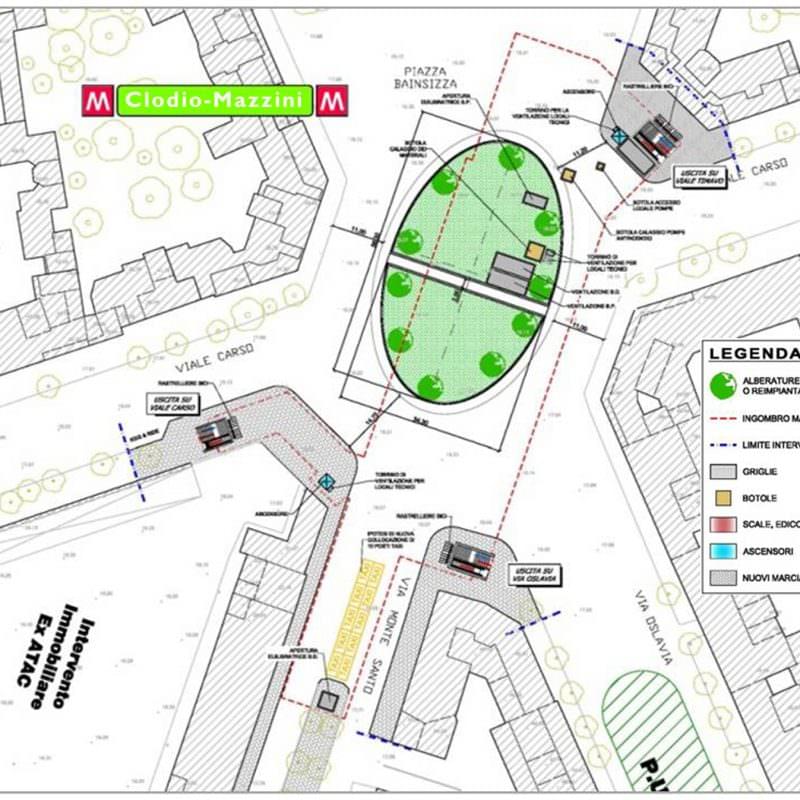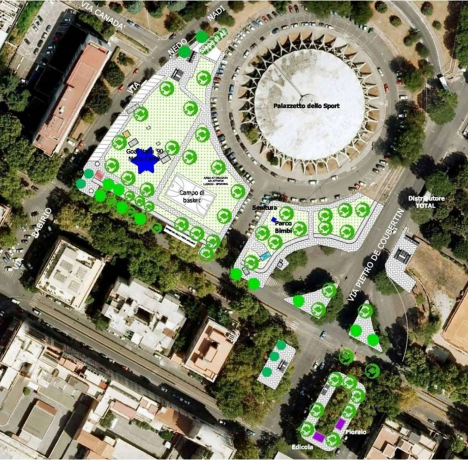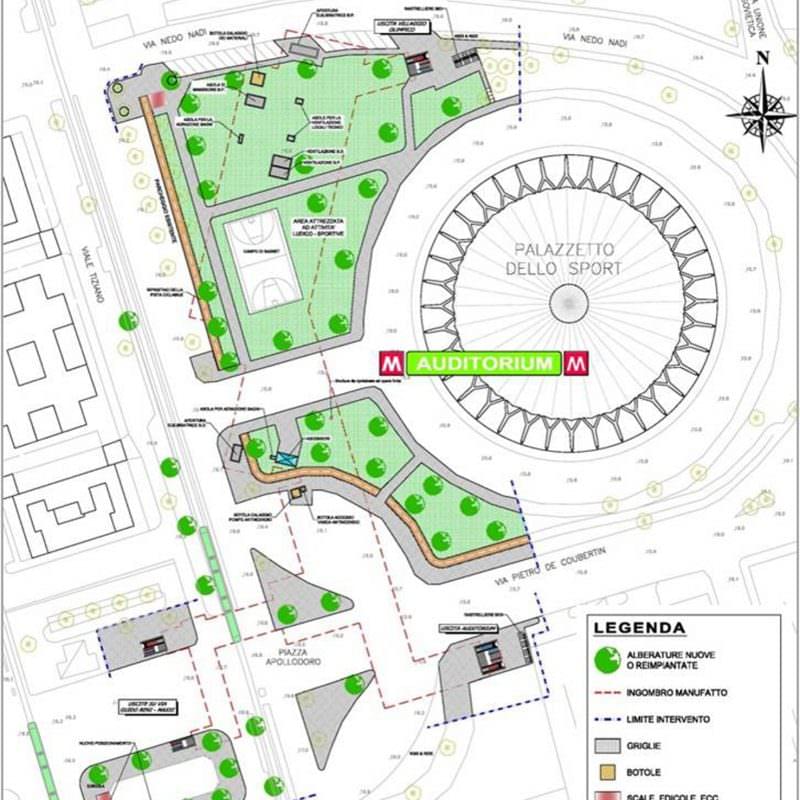In operation
Pigneto
station
The Pigneto station is located at the intersection of Via del Pigneto and the Circonvallazione Casilina, near the Rome-Pisa railway line, which runs in a trench at a lower level of approximately 7 meters compared to street level. A pedestrian overpass on the continuation of Via del Pigneto provides a connection between the two parts of the neighborhood.
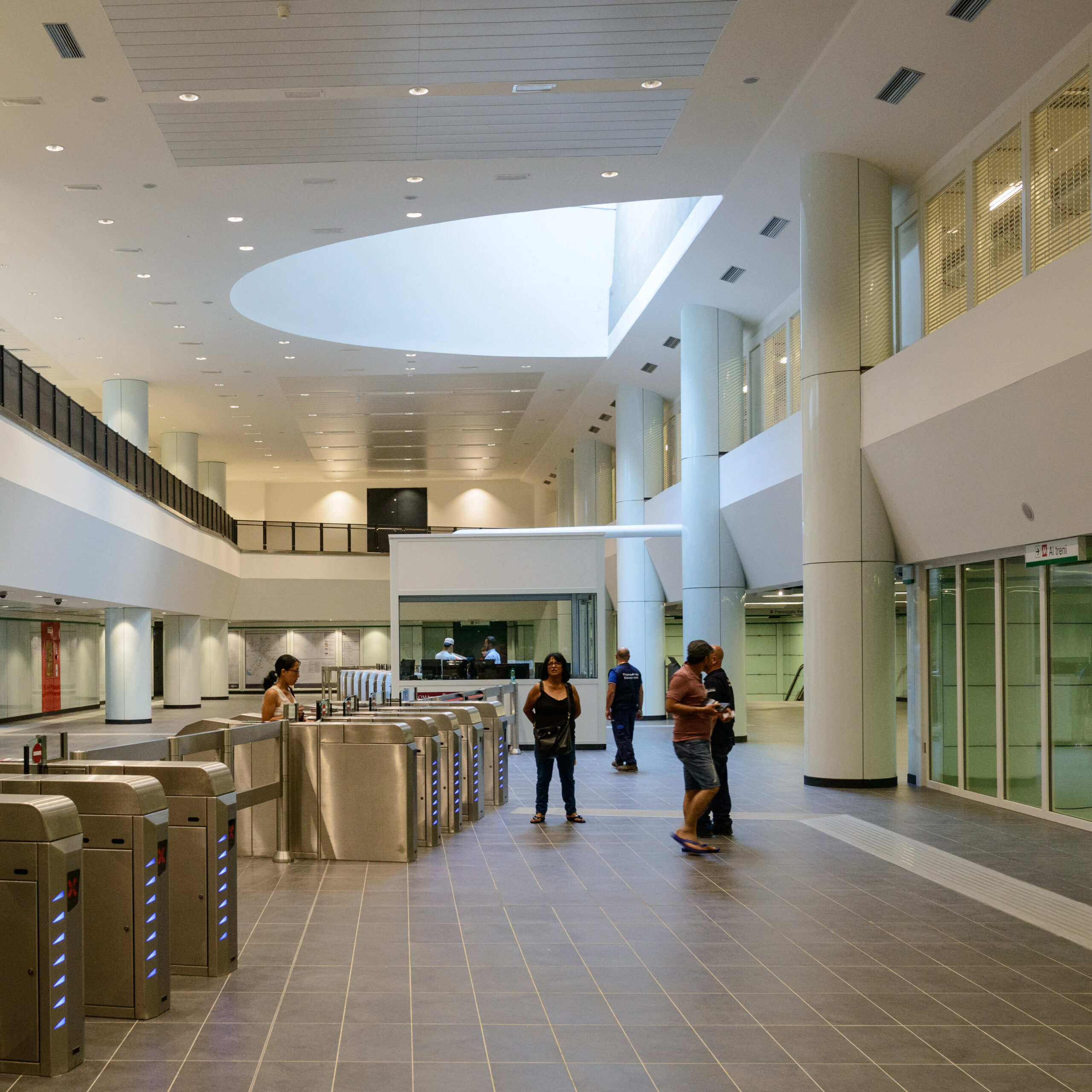
In operation
The Pigneto station is located at the intersection of Via del Pigneto and the Circonvallazione Casilina, near the Rome-Pisa railway line, which runs in a trench at a lower level of approximately 7 meters compared to street level. A pedestrian overpass on the continuation of Via del Pigneto provides a connection between the two parts of the neighborhood.
The choice of the site was strategically aimed at achieving greater integration between public transportation services. The station is envisioned as a future intermodal interchange hub in anticipation of the connection with the regional railway lines FL1, FL3, FL4, and FL6, for which the corresponding interchange station is currently in the planning stage.
The station has a rectangular footprint with a length of 115 meters, width of 32.50 meters, and excavation depth of 29 meters, constructed between diaphragm walls with a thickness of 100 cm and a length of 45 meters. At the sump pit, the excavation depth reached 32 meters. The entrance to the station is created with a protrusion on the northern portion of the station box, measuring 61 x 13 meters and with a depth of approximately 14 meters, constructed between diaphragm walls with a thickness of 100 cm and a length of 21 meters.
The initial excavations were carried out using a grab bucket, which was later replaced by a hydro-milling machine in order to reduce vibrational impact on the surrounding area.
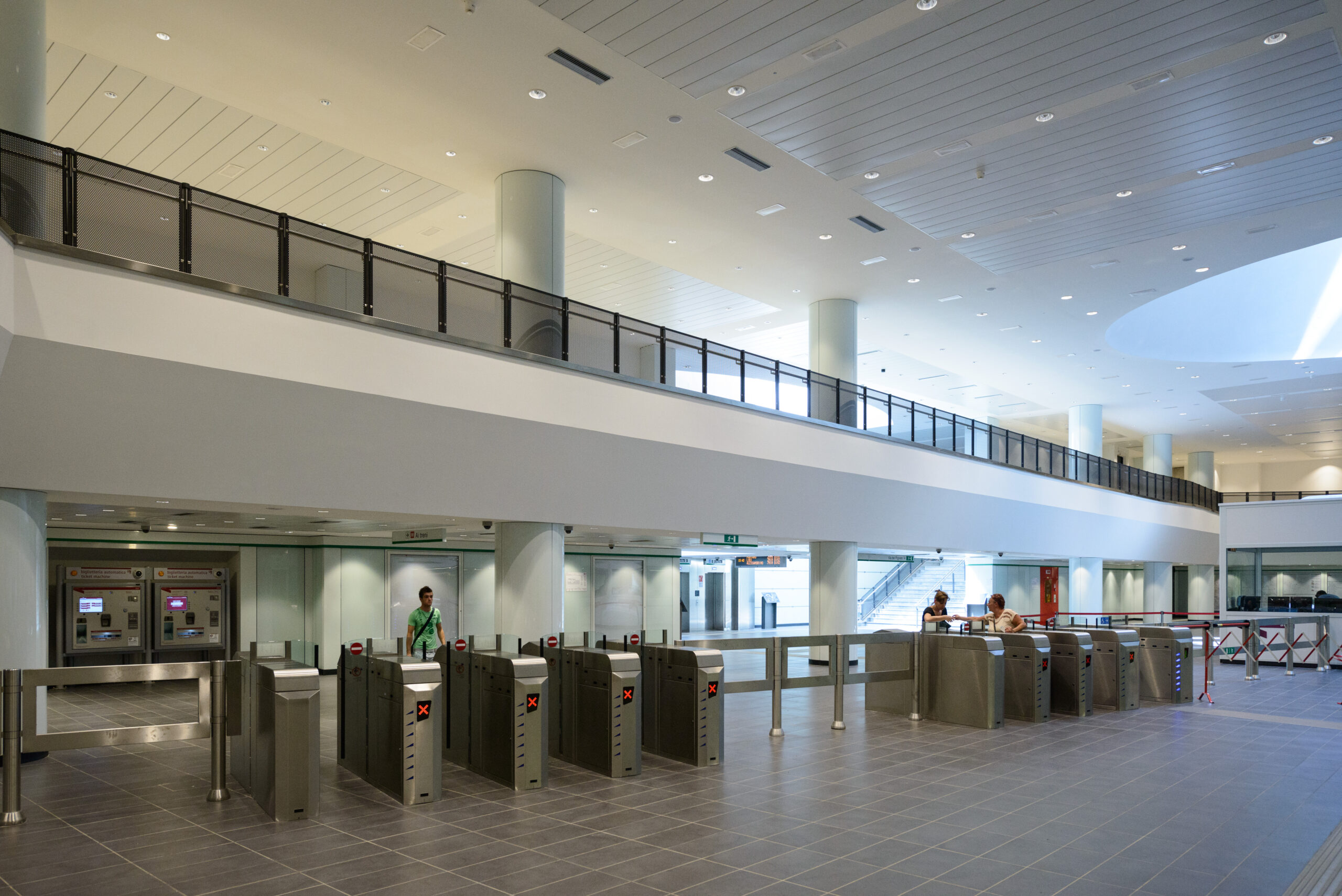
Station Levels and Access
The station is developed on 5 underground levels: the first level is intended to accommodate the emergency exit of the elevator and technical rooms, the atrium level, a second technical level containing a spacious area, a third technical level, and the platform level. The first technical level is centrally hollowed out to create a double-height space for the atrium below. In addition to these levels, there are the roof slab and the foundation slab.
The structure was constructed with an open-air excavation in an archaeological mode between diaphragm walls up to the level of the first slab. The roof slab and the first technical slab were then constructed, followed by the top-down method until the completion of the bottom slab. The finishing of the station construction was carried out in an upward direction, with the installation of waterproofing material placed between the diaphragm wall and the internal lining before the final lining was installed.
The station is equipped with three entrances, all located in the north extension: two sets of stairs to the northeast and northwest, served by escalators and fixed stairs, and a elevator centrally positioned relative to them and integrated within a skylight. On the south sidewalk, opposite the first one, there is another smaller skylight with the same structural and light-permeable characteristics.
The surface area was restored with the aim of giving a homogeneous configuration to the section of Via del Pigneto affected by the works. Adequately sized sidewalks were constructed to accommodate the new station features, while ensuring pedestrian passage and access to existing commercial services. The area behind the south sidewalk, previously occupied by an unstructured garden, was revitalized by creating a playground for children, a paved area with game designs, a bike path, and a 5-a-side football field. Pergolas were also built to provide shaded areas.
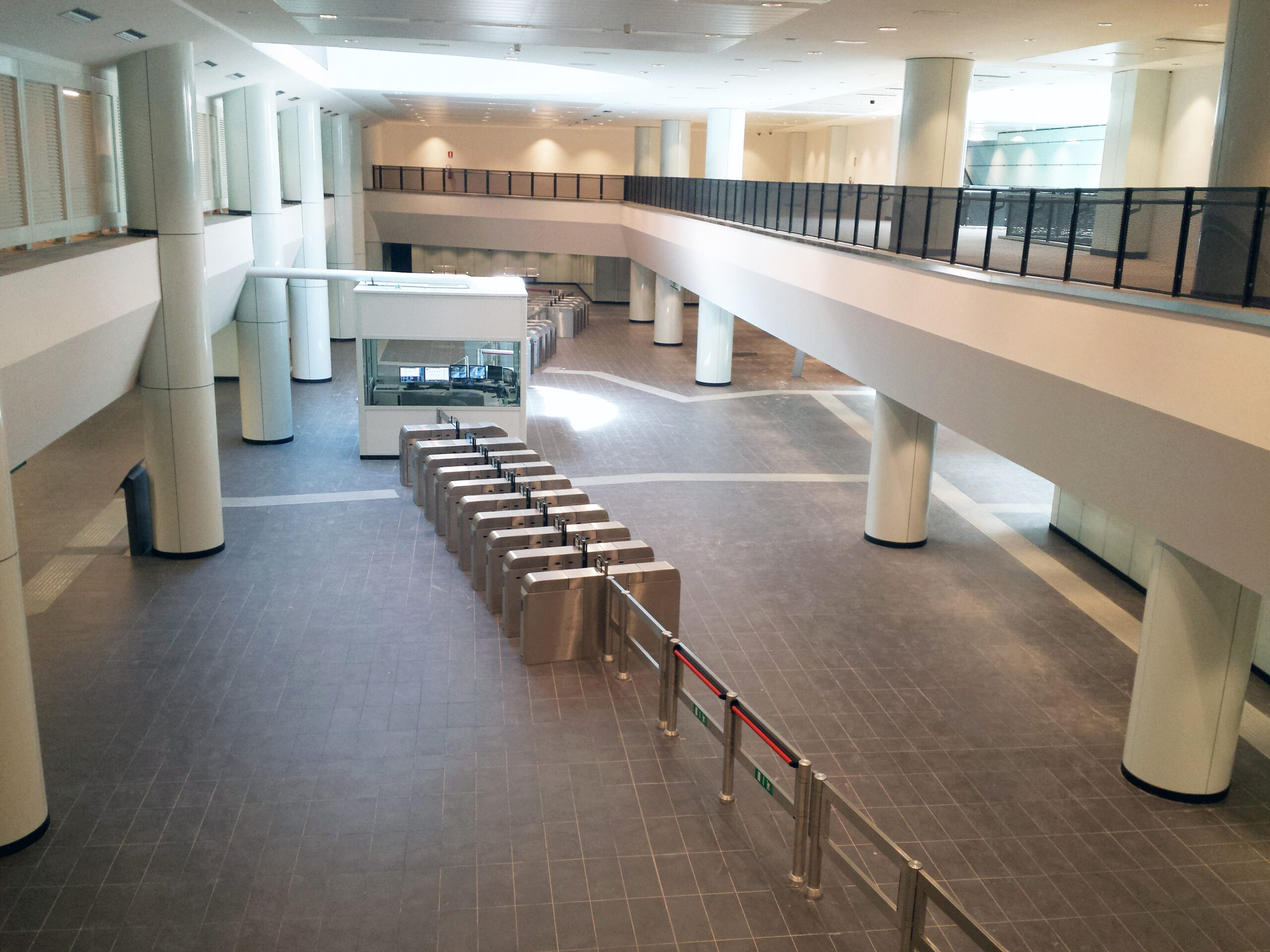
Highlights
End Benefit and Sustainability
In the perspective of the future construction of the interchange hub with the regional railway lines FL1, FL3, FL4, and FL6, for which the design is currently underway, the Pigneto station will represent a significant turning point in the context of urban mobility in the capital.
Furthermore, the station has provided an exceptional opportunity for the expansion of archaeological knowledge. In the area affected by the construction, an ancient Rome landfill was discovered, and its artifacts were carefully preserved in collaboration with the Superintendent’s Office and subsequently studied.
Architecture
The design of the Pigneto station was entrusted to the architecture firm Archigroup sas, led by Arch. Fabrizio Vinditti. The distinctive elements of the station are the two ground-level skylights built on the sidewalks of Via del Pigneto, positioned opposite to the street axis. The absolute transparency of the glass panels of the skylights, interrupted only by stainless steel support elements, allows natural light to enter the floor below without creating a visual obstacle for motorists or service users. They also contribute to providing additional space to the already double-height atrium, creating a link with the surface.
The external canopies covering the stairwells are a common feature of some of the Line C stations. They are constructed with a rectangular reinforced concrete structure open on three sides at the level of the upper landing and are covered with running-laid beveled travertine slabs. The roof is finished with a metal sheet featuring parallel ridges along the long side of the canopy. The finishes of the station adhere to the standards of Metro C stations. The floors are made of anthracite-colored porcelain stoneware, and the wall coverings are in white glass, topped with a signal band.
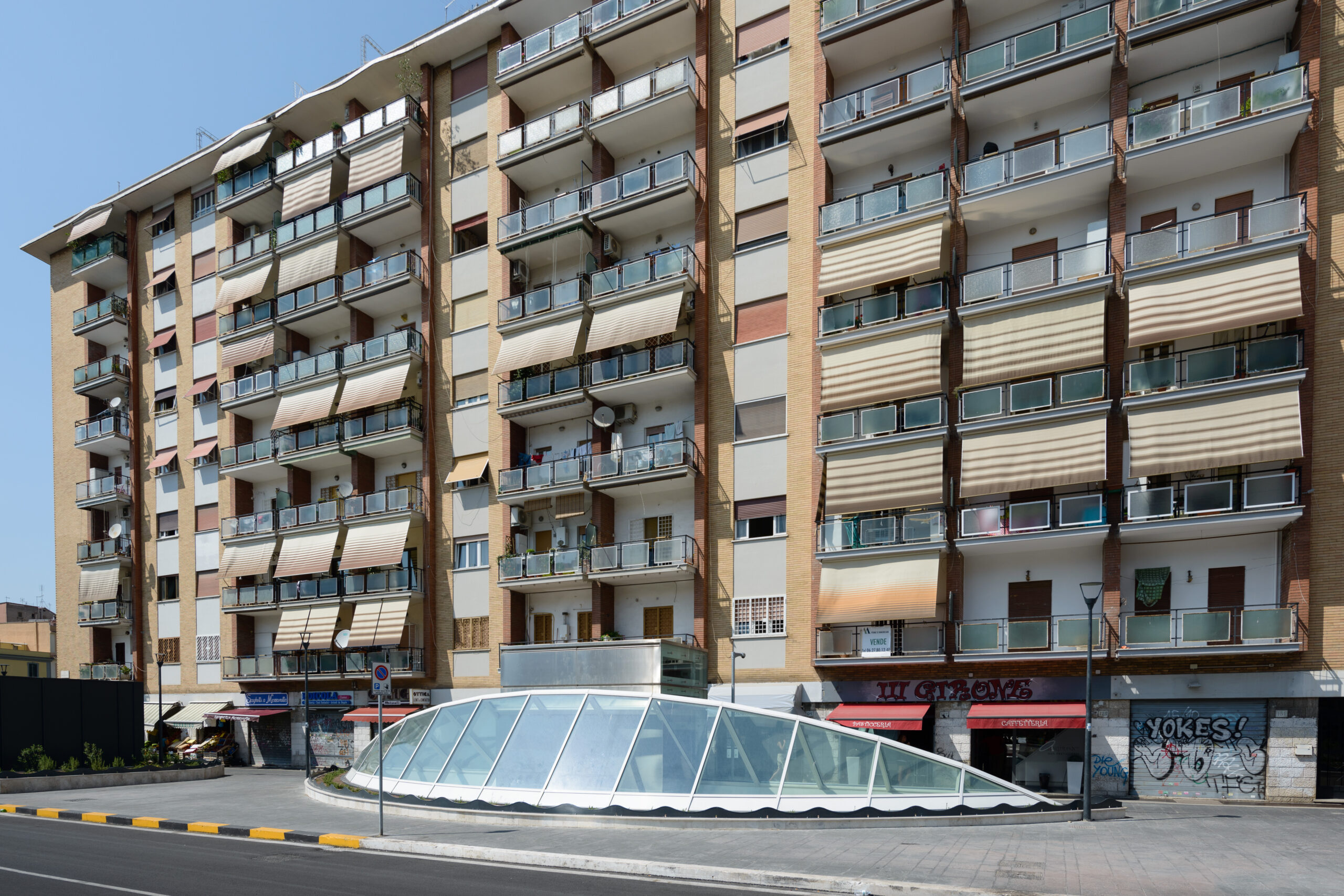
The high ceiling in the atrium is made of plasterboard and aluminum slats to create symmetry and designs that mimic the shape of the station. The lower atrium ceiling is partly made of plasterboard and aluminum slats and partly (in the paid area) features a diffuser ceiling made of pre-painted white Metro C aluminum panels arranged in rectangular modules, with associated multifunctional elements containing lighting fixtures for direct and indirect lighting, sound distribution systems, cameras, speakers, etc.
The same diffuser ceilings are installed along the ramps with adjacent modules. The platform ceilings, on the other hand, are made of curved shaped elements in pre-painted white aluminum sheet. The signal band at the platform level is integrated with lighting fixtures and cameras.

DESIGN IN PROGRESS THE FUTURE OF THE LINE
FUTURE DEVELOPMENTS
The Line C under construction includes 3 stations: Porta Metronia, Colosseo – Fori Imperiali, and Venezia. These stations will enter the heart of Rome and will allow the enjoyment of the artifacts found in the excavations thanks to the planned museum setups. The Colosseo station will also be the junction between Line C and the already operational Line B of the Rome metro, expanding the network effect of the capital’s mobility.
The Line C currently in operation connects the southeastern suburbs to the San Giovanni station, a transfer point with Line A and the first example in Rome of a museum station. The route continues through 22 stations.
DESIGN IN PROGRESS
The Venezia – Clodio/Mazzini route will run through stations Chiesa Nuova, San Pietro, Ottaviano, which is the second interchange node of Line C with Line A, and Clodio/Mazzini.
FUTURE DEVELOPMENTS
As a possible opportunity to extend Line C, the Farnesina – Clodio/Mazzini route is in the preliminary design phase by the Client. The project under study includes the construction of two stations: Auditorium and Farnesina. The first will be located near the Auditorium Parco della Musica and the Palazzetto dello Sport; the second will allow a quicker connection to important places for the city such as the Foro Italico, the Olympic Stadium, as well as the Ministry of Foreign Affairs and the Institutes of Public Administration.
Monte Compatri/Pantano
22 Stations in operation
The Monte Compatri/Pantano Station, the eastern terminus of the line, represents a significant rubber-steel interchange hub, thanks to two large parking areas, one of which is a multi-level parking and the other is at ground level, allowing for the parking of private vehicles.
Graniti
22 Stations in operation
The 10 pre-existing stations of the Termini-Pantano railway have been modernized according to the technological and architectural standards of the new Line, adapting their functional and plant characteristics. The Graniti Station has been open to the public since November 9, 2014.
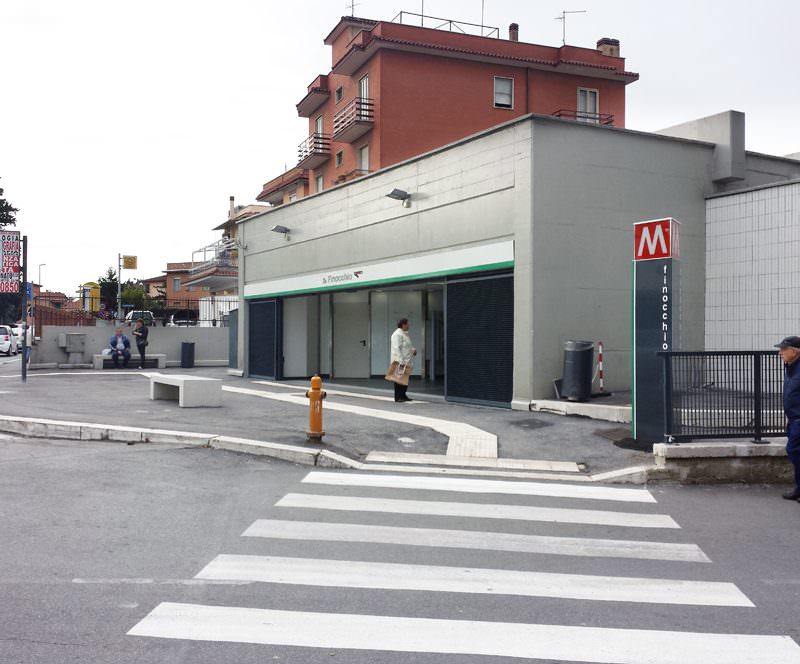
Finocchio
22 Stations in operation
"The 10 pre-existing stations of the Termini-Pantano railway have been modernized according to the technological and architectural standards of the new Line, adapting their functional and plant characteristics. The Finocchio Station has been open to the public since November 9, 2014.
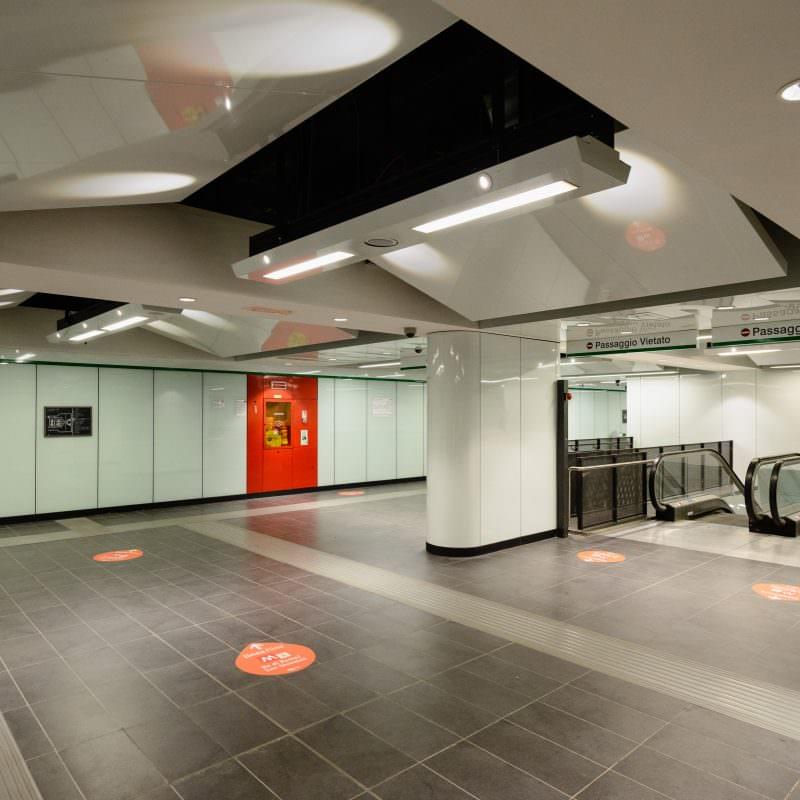
Bolognetta
22 Stations in operation
The 10 pre-existing stations of the Termini-Pantano railway have been modernized according to the technological and architectural standards of the new Line, adapting their functional and plant characteristics. The Bolognetta Station has been open to the public since November 9, 2014.
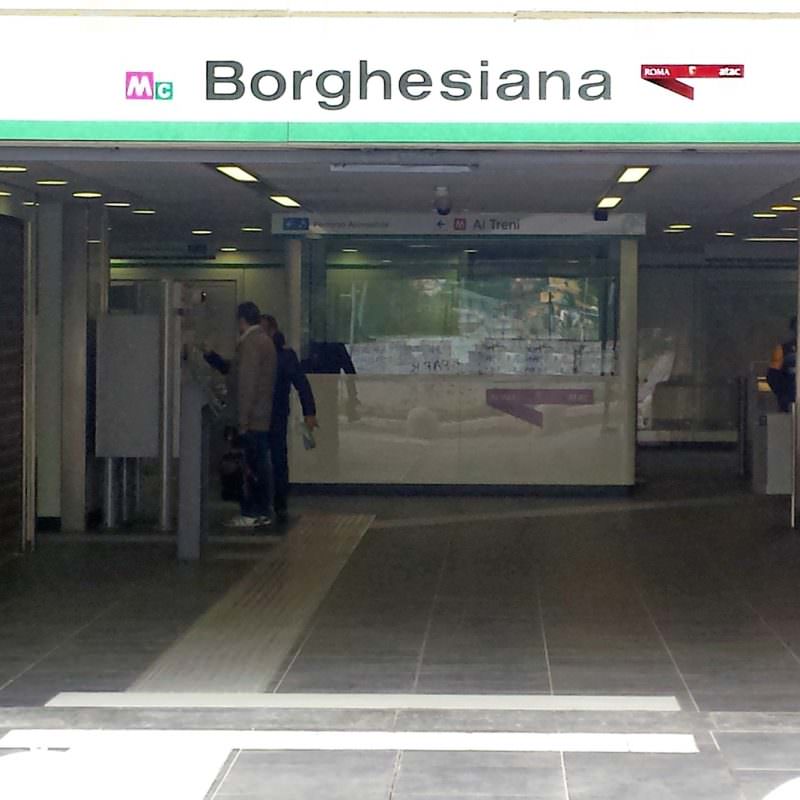
Borghesiana
22 Stations in operation
The 10 pre-existing stations of the Termini-Pantano railway have been modernized according to the technological and architectural standards of the new Line, adapting their functional and plant characteristics. The Borghesiana Station has been open to the public since November 9, 2014.
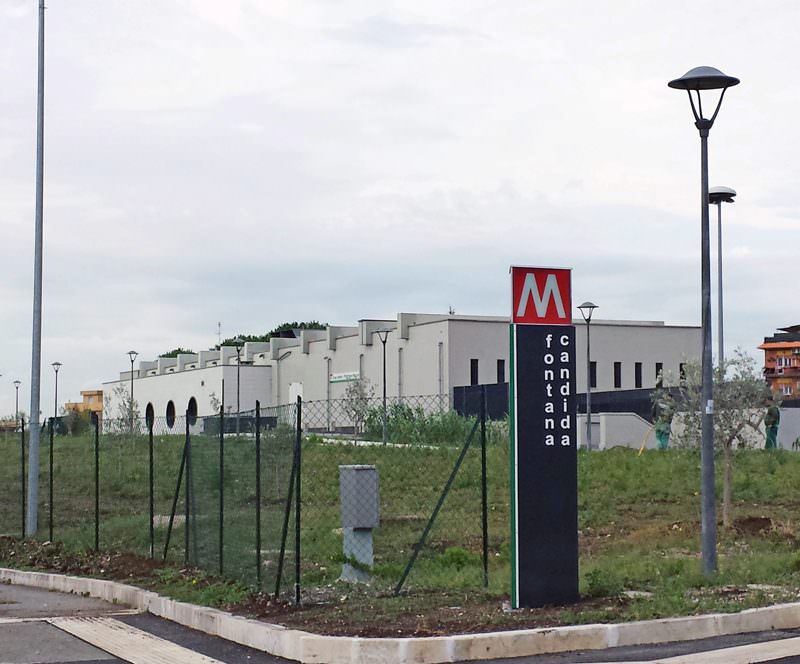
Due Leoni/Fontana Candida
22 Stations in operation
The 10 pre-existing stations of the Termini-Pantano railway have been modernized according to the technological and architectural standards of the new Line, adapting their functional and plant characteristics. The Due Leoni/Fontana Candida Station has been open to the public since November 9, 2014.
Grotte Celoni
22 Stations in operation
The 10 pre-existing stations of the Termini-Pantano railway have been modernized according to the technological and architectural standards of the new Line, adapting their functional and plant characteristics. The Grotte Celoni Station has been open to the public since November 9, 2014.
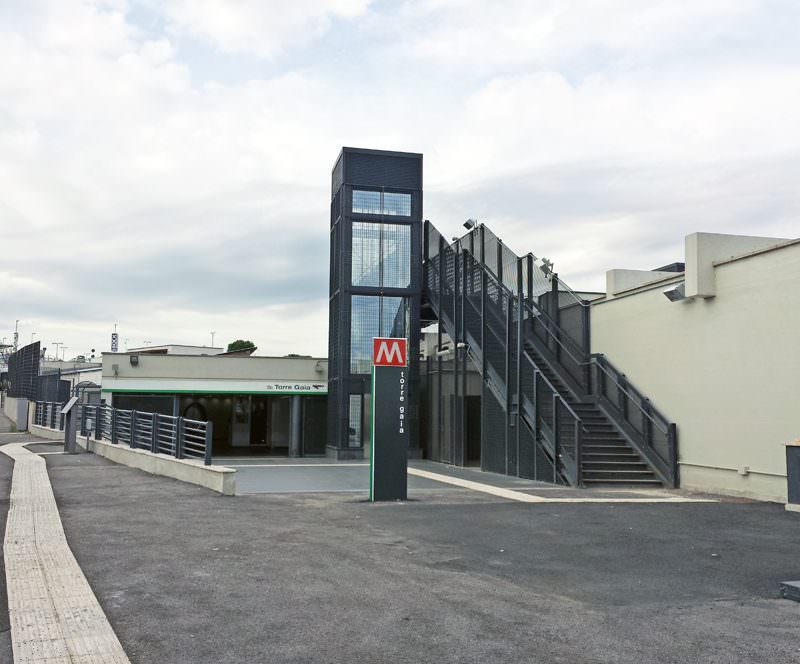
Torre Gaia
22 Stations in operation
The 10 pre-existing stations of the Termini-Pantano railway have been modernized according to the technological and architectural standards of the new Line, adapting their functional and plant characteristics. The Torre Gaia Station has been open to the public since November 9, 2014.
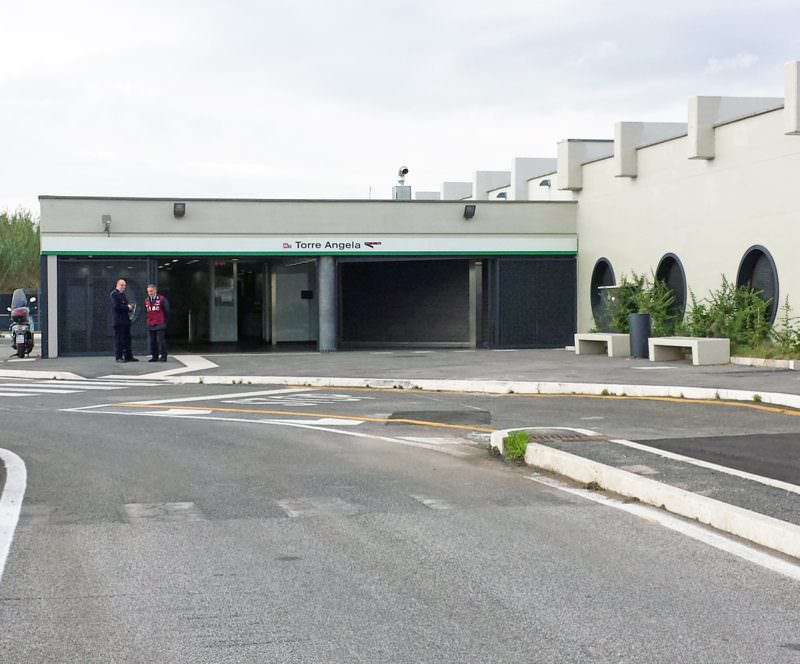
Torre Angela
22 Stations in operation
The 10 pre-existing stations of the Termini-Pantano railway have been modernized according to the technological and architectural standards of the new Line, adapting their functional and plant characteristics. The Torre Angela Station has been open to the public since November 9, 2014.
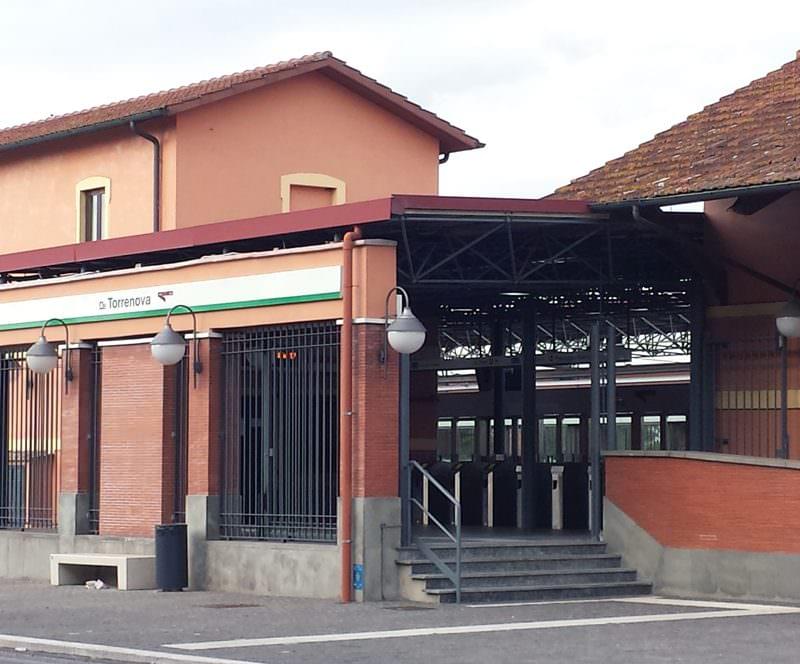
Torrenova
22 Stations in operation
The 10 pre-existing stations of the Termini-Pantano railway have been modernized according to the technological and architectural standards of the new Line, adapting their functional and plant characteristics. The Torrenova Station has been open to the public since November 9, 2014.
Giardinetti
22 Stations in operation
The Giardinetti Station, the only completely new surface station, is the point where the underground line meets the surface line. It is characterized by a trapezoidal shape with large windows and is equipped with a parking lot with over 200 car spaces. The station's atrium, at street level, is accessible from Via Casilina. The Giardinetti Station has been open to the public since November 9, 2014.
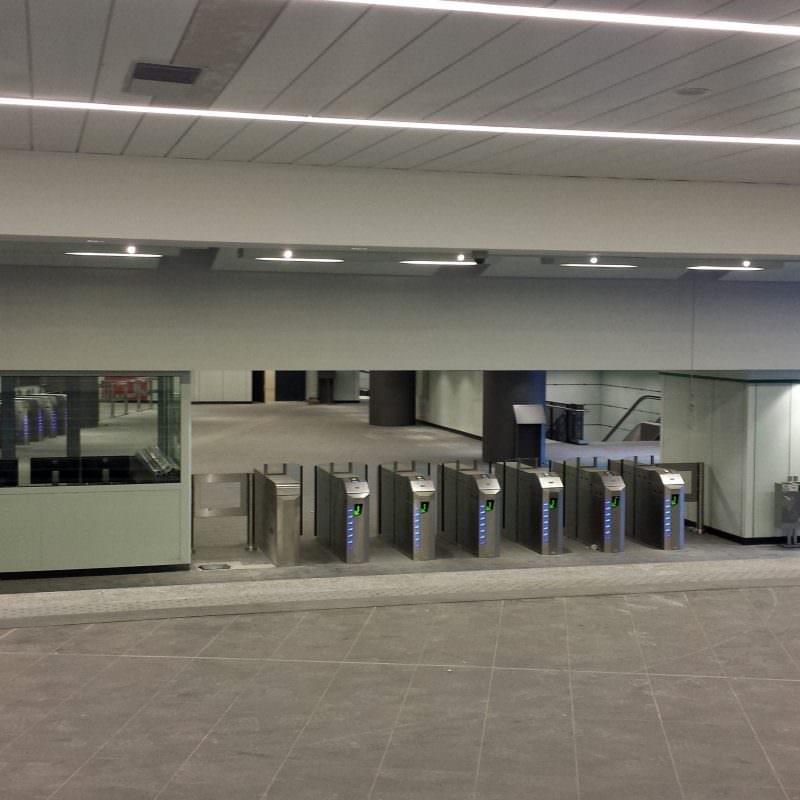
Torre Maura
22 Stations in operation
The Torre Maura Station is located at the confluence of Via Giglioli and Via Tobagi. It is accessible through three entrances, two along Via Casilina and one on Via Giglioli. The Torre Maura Station has been open to the public since November 9, 2014.
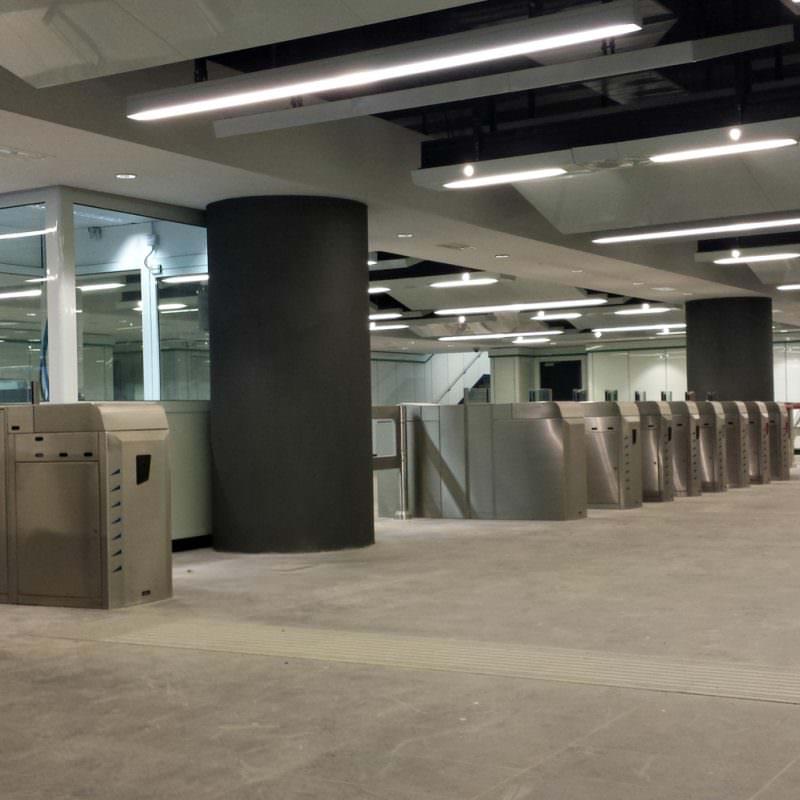
Torre Spaccata
22 Stations in operation
The Torre Spaccata Station is located between Via Tor Tre Teste and Via di Torre Spaccata, accessible from both sides of Via Casilina. The Torre Spaccata Station has been open to the public since November 9, 2014.
Alessandrino
22 Stations in operation
The Alessandrino Station is built under Via Casilina, between Piazza Sor Capanna and Viale Alessandrino, and is accessible from both the square and Via Casilina. The Alessandrino Station has been open to the public since November 9, 2014.
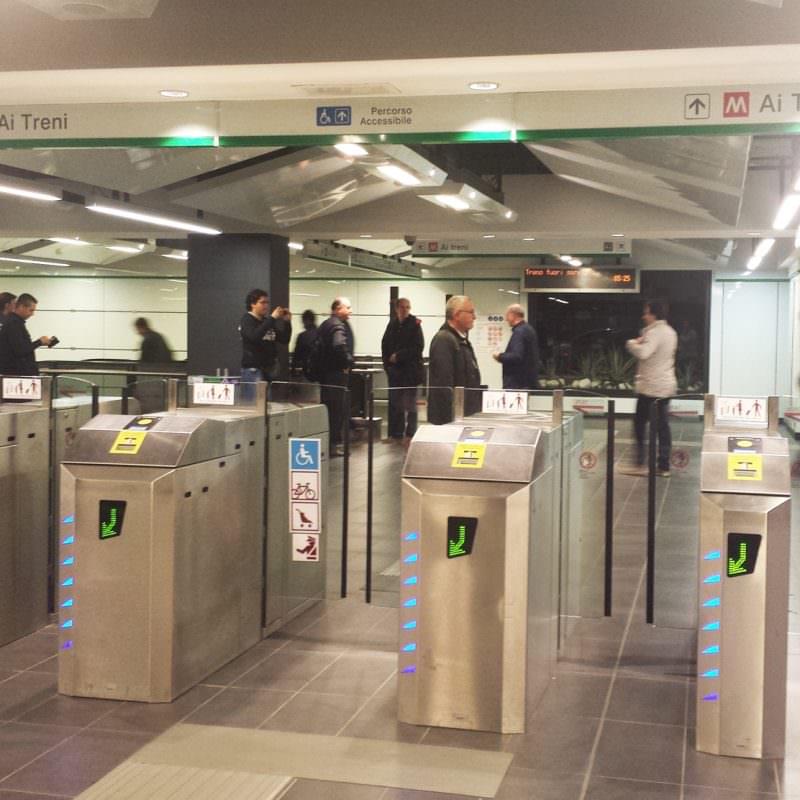
Parco di Centocelle
22 Stations in operation
The Centocelle Park Station, located between Via Casilina and Via Palmiro Togliatti, one of the major arterial roads of the Capital, is situated opposite the large Centocelle Urban Archaeological Park. The Centocelle Park Station has been open to the public since November 9, 2014.
Mirti
22 Stations in operation
The Mirti Station is built beneath the square of the same name, a symbol of one of the populated and lively neighborhoods of the Capital. The station is accessible through 4 entrances and 2 elevators. The square has been completely redeveloped. The Mirti Station has been open to the public since June 29, 2015.
Gardenie
22 Stations in operation
The Gardenie Station, located beneath the square of the same name, has three entrances, one across Viale della Primavera, connected by an underpass, and two on the north side of the square, which has been completely redeveloped. The Gardenie Station has been open to the public since June 29, 2015.
Teano
22 Stations in operation
The Teano Station, accessible from both Via Teano and Viale Partenope, is characterized by large spaces designated for commercial activities and a spacious atrium that can be used for events, exhibitions, and various initiatives. The Teano Station has been open to the public since June 29, 2015.
Discover moreMalatesta
22 Stations in operation
The Malatesta Station is built beneath the square of the same name, where bus terminals and stops are located. The new pedestrian square is characterized in the center by an open-air hypogeal space, accessible via a staircase that connects the outside with the station's intermediate atrium: a large space designated for commercial, cultural activities, and events, which gives back to the neighborhood a place for gathering and socializing. The Malatesta Station has been open to the public since June 29, 2015.
Discover morePigneto
22 Stations in operation
The Pigneto Station, constructed near the intersection of Via del Pigneto and Circonvallazione Casilina, will constitute an important interchange node with the soon-to-be-completed FL1 railway line. The area above the station has been completely redeveloped, with the creation of an equipped park and a sports field. The Pigneto Station has been open to the public since June 29, 2015.
Discover moreLodi
22 Stations in operation
The Lodi Station, the temporary terminus of the line, is situated beneath Via La Spezia (stretch between Via Orvieto and Via Foligno), a very important thoroughfare for the city. To adapt the presence of the subway to the historical and urban context in which it is located, the only elements visible on the surface are the steel and glass structures of the elevators and the station entrances. The Lodi Station has been open to the public since June 29, 2015.
San Giovanni
22 Stations in operation
The San Giovanni Station plays a fundamental role in the construction of Line C, especially because it represents the first interchange node with the existing Line A. The project underwent several evolutions following the results of archaeological investigations. The discovery of ancient structures to be preserved, up to a depth of about 18-20 meters from the ground level, led the Special Superintendence for the Archaeological Heritage of Rome to prescribe the impossibility of carrying out ground consolidations from the ground level, favoring open-air excavations with archaeological methods in the backfill soils, up to about 19 meters deep, excluding the realization of mechanized excavations for the construction of line tunnels in the section between San Giovanni Station and Amba Aradam/Ipponio Station.
Discover morePorta Metronia
Route under construction
The station is located midway between the Fori Imperiali Station (interchange Line C/Line B) and the San Giovanni Station (interchange Line C/Line A), specifically about 500 meters south of Piazza San Giovanni in Laterano and 300 meters from the entrances of the hospital of the same name.
Discover moreFori Imperiali/Colosseo
Route under construction
The Fori Imperiali Station is situated beneath the street of the same name, in the area between the Colosseum (Flavian Amphitheatre) and the area in front of the Basilica of Maxentius.
Discover moreVenezia
Route under construction
The Venezia Station is located beneath the square of the same name in a strategic position as it is situated at the junction connecting the Baroque center of Rome and the archaeological area of Via dei Fori Imperiali. One of the two exits is planned to be in front of Palazzo Venezia, near Via del Plebiscito. The second exit is expected to be at Piazza Madonna di Loreto.
Discover moreChiesa Nuova
Design in progress
The Chiesa Nuova Station is located beneath the square of the same name, near the Church of Santa Maria in Vallicella and the adjacent Oratorio dei Filippini, a complex of exceptional historical and artistic importance.
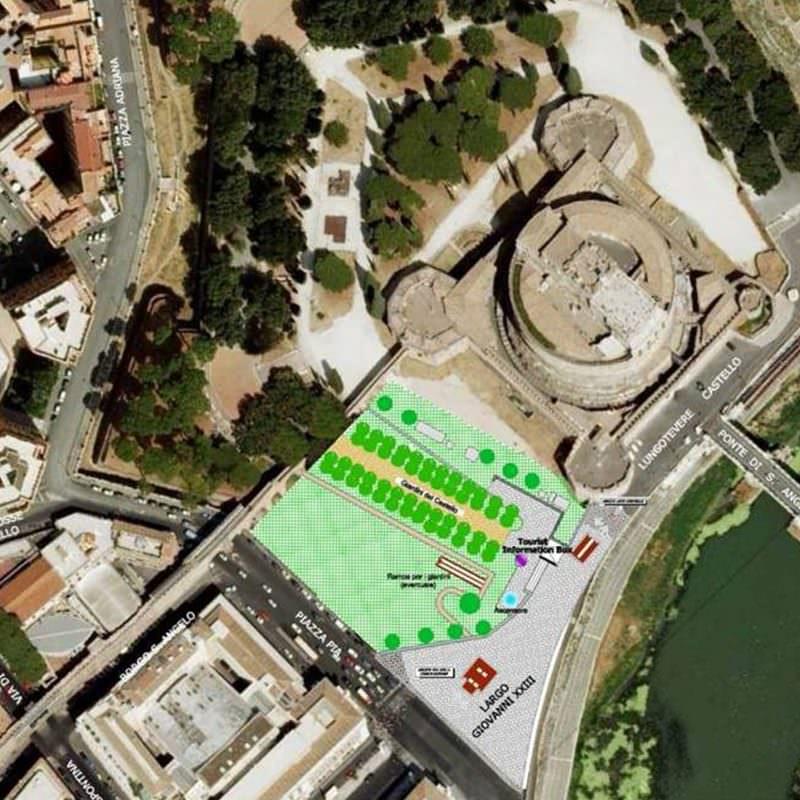
San Pietro
Design in progress
The San Pietro Station is located to the west of Castel Sant’Angelo, near Largo Giovanni XXIII/Piazza Pia and Lungotevere Vaticano.
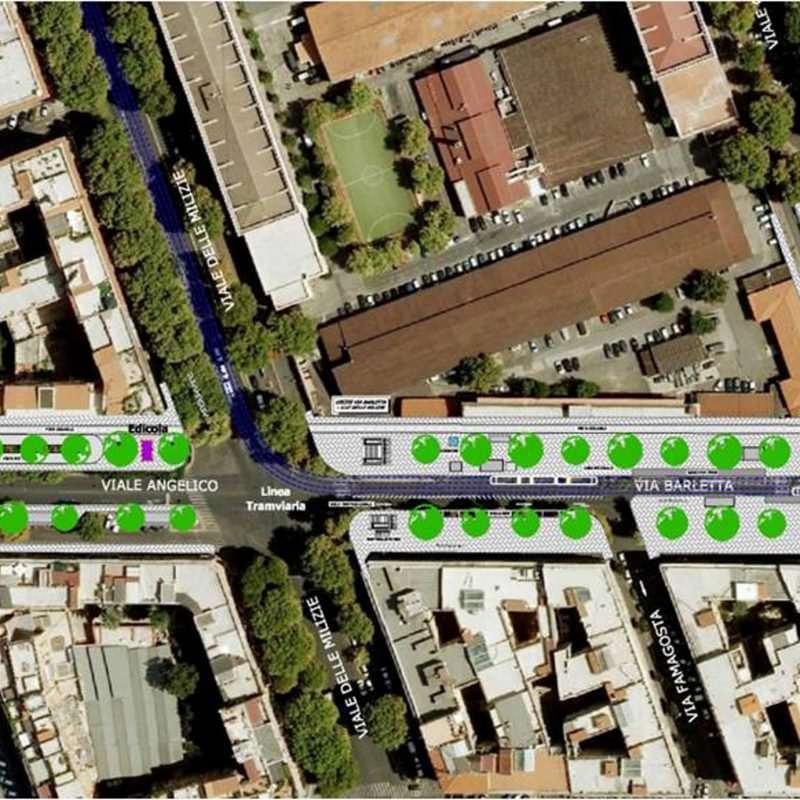
Ottaviano
Design in progress
The Ottaviano Station, characterized by its connection with Line A, is entirely underground and is located along the axis of Via Barletta, with the connecting structure to the Line A station situated on the side of Viale Giulio Cesare.
Clodio/Mazzini
Design in progress
The Clodio-Mazzini Station is located beneath Piazza Bainsizza, along the terminal part of Via Monte Santo, to optimize the flow of users from the Prati district.
Auditorium
Future developments
The Auditorium Station is situated in the open spaces surrounding the Palazzetto dello Sport between Viale Pierre de Coubertin and Viale Tiziano, currently landscaped and partially used as a parking area.
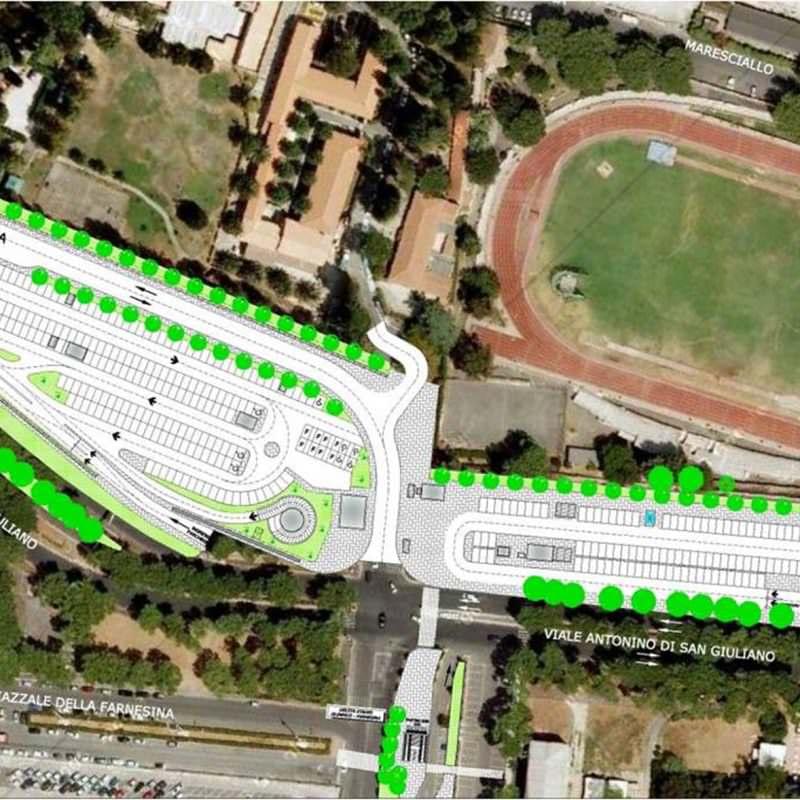
Farnesina
Future developments
The Farnesina Station, located beneath the surface of the "Farnesina" impound lot for towed vehicles, is characterized by its surroundings, which include significant facilities such as the Ministry of Foreign Affairs, the monumental complex of the Foro Italico, the stadium, public administration institutes, university residences, etc. Two entrances are planned, located respectively in front of the Ministry of Foreign Affairs and on Via Antonio da San Giuliano, near Ponte Milvio. For the terminal station of the route, an expansion of the existing parking areas is envisaged, with two large park-and-ride facilities.



